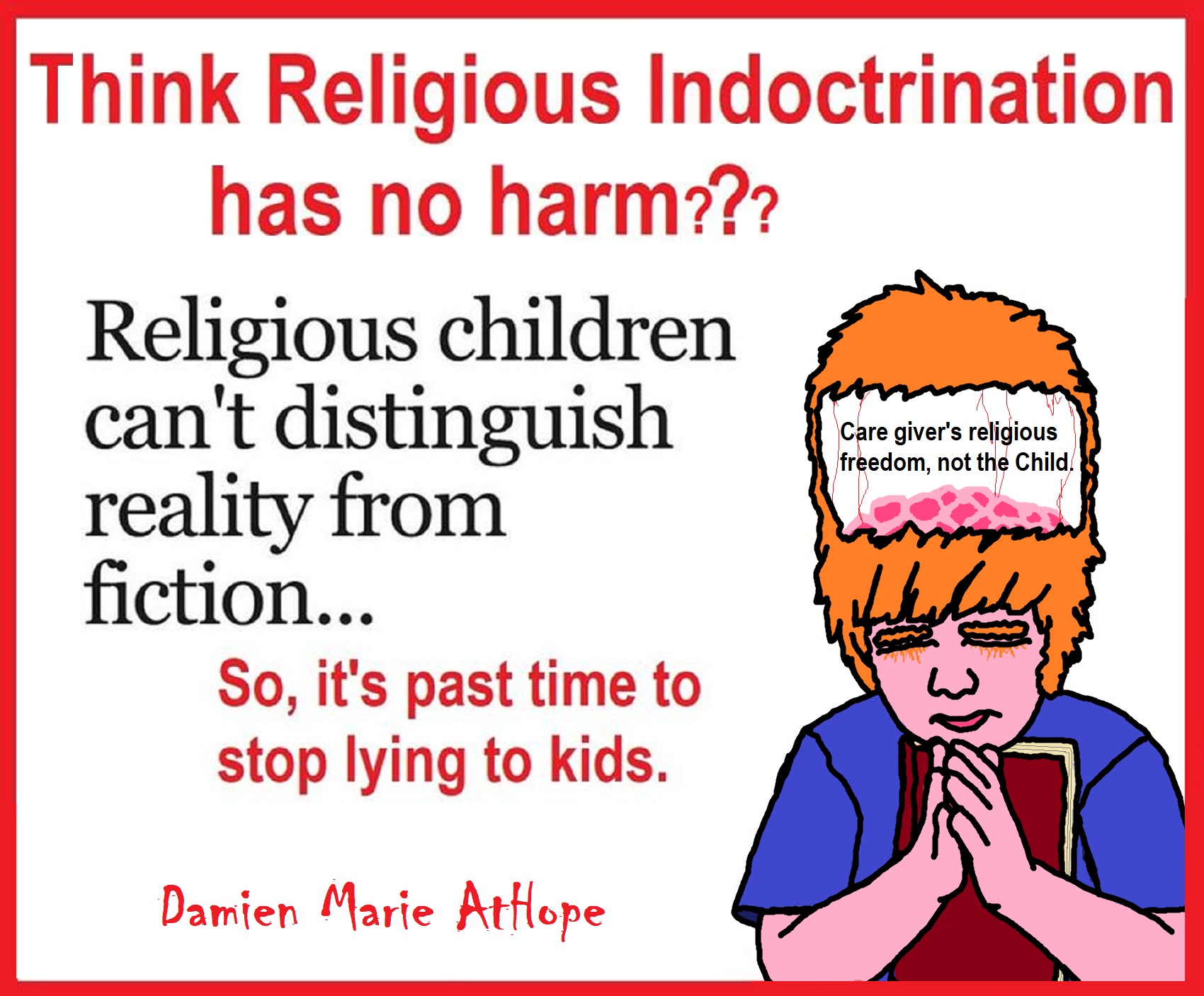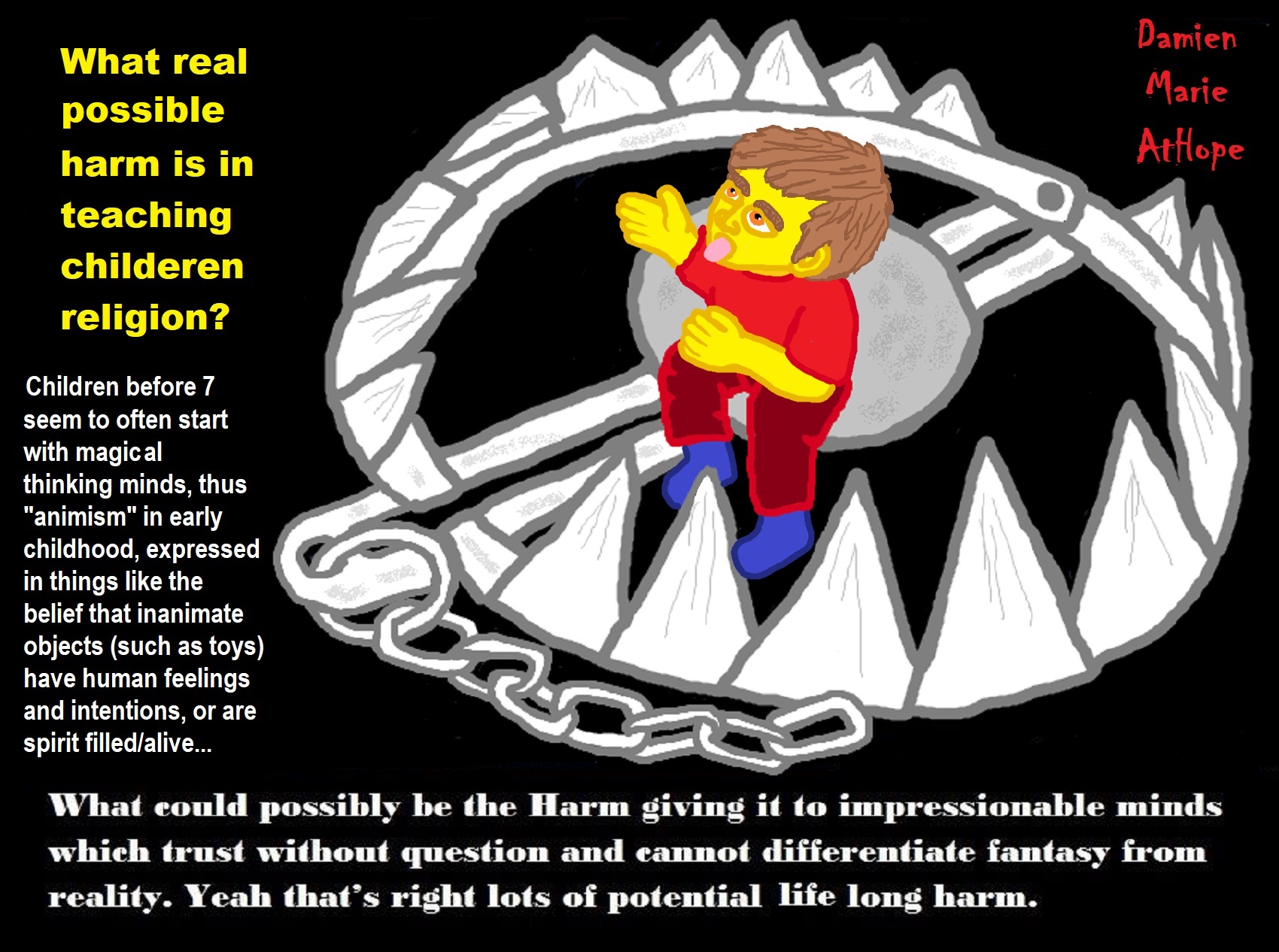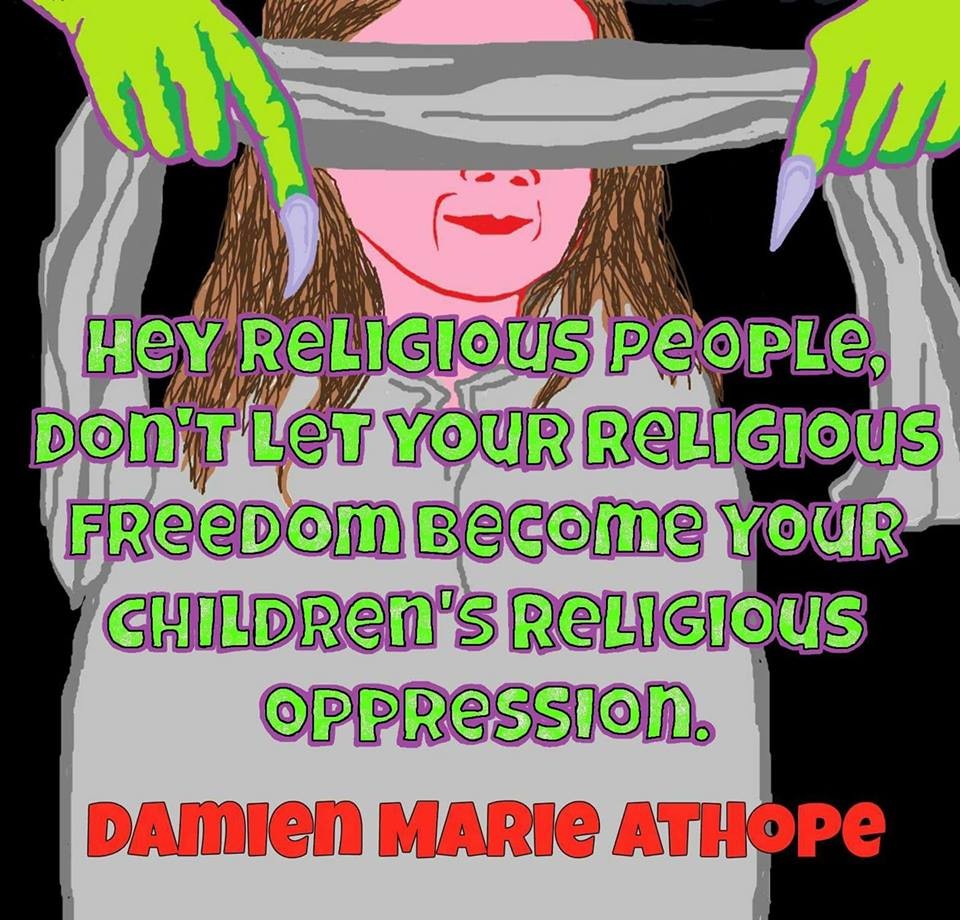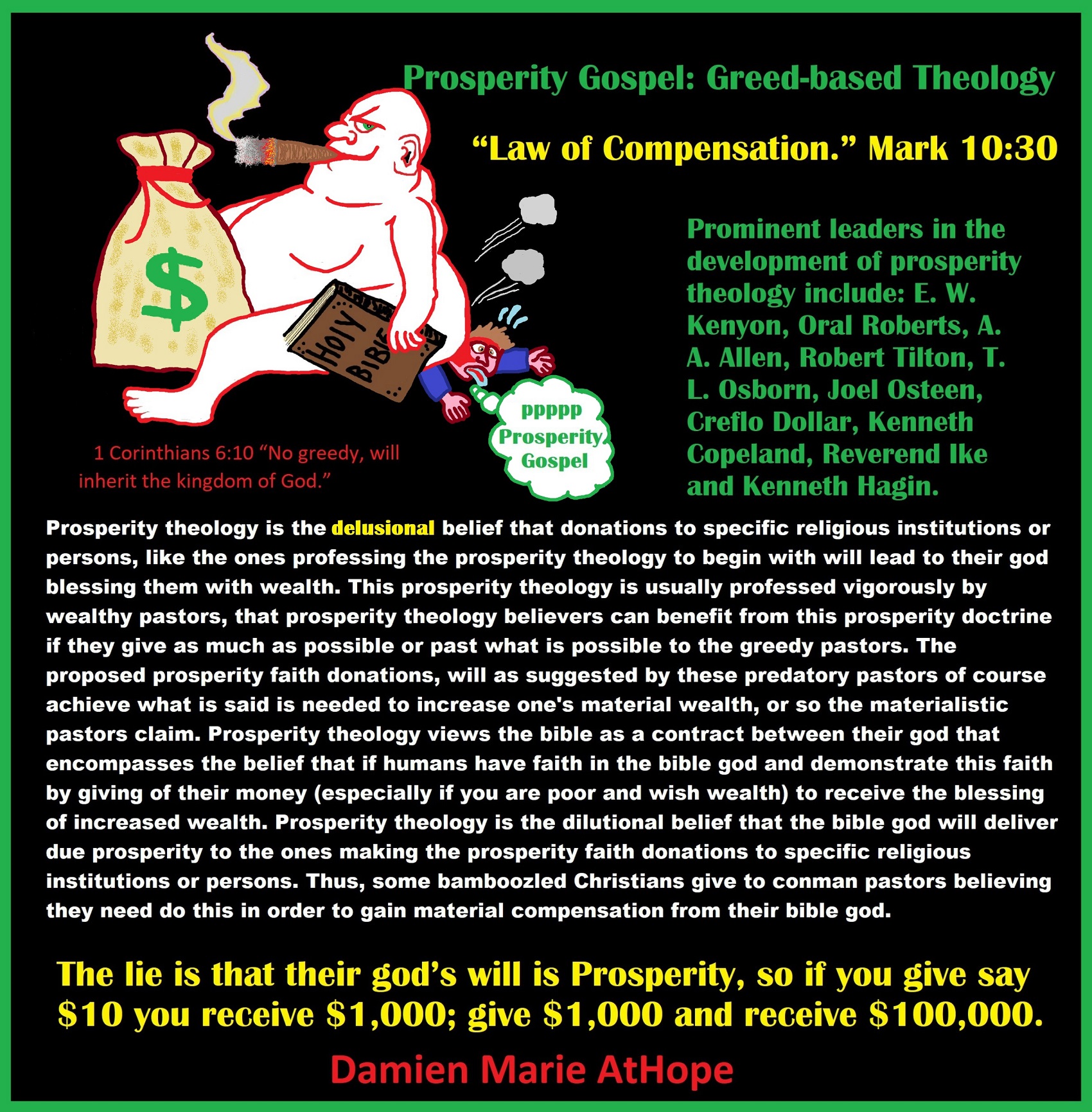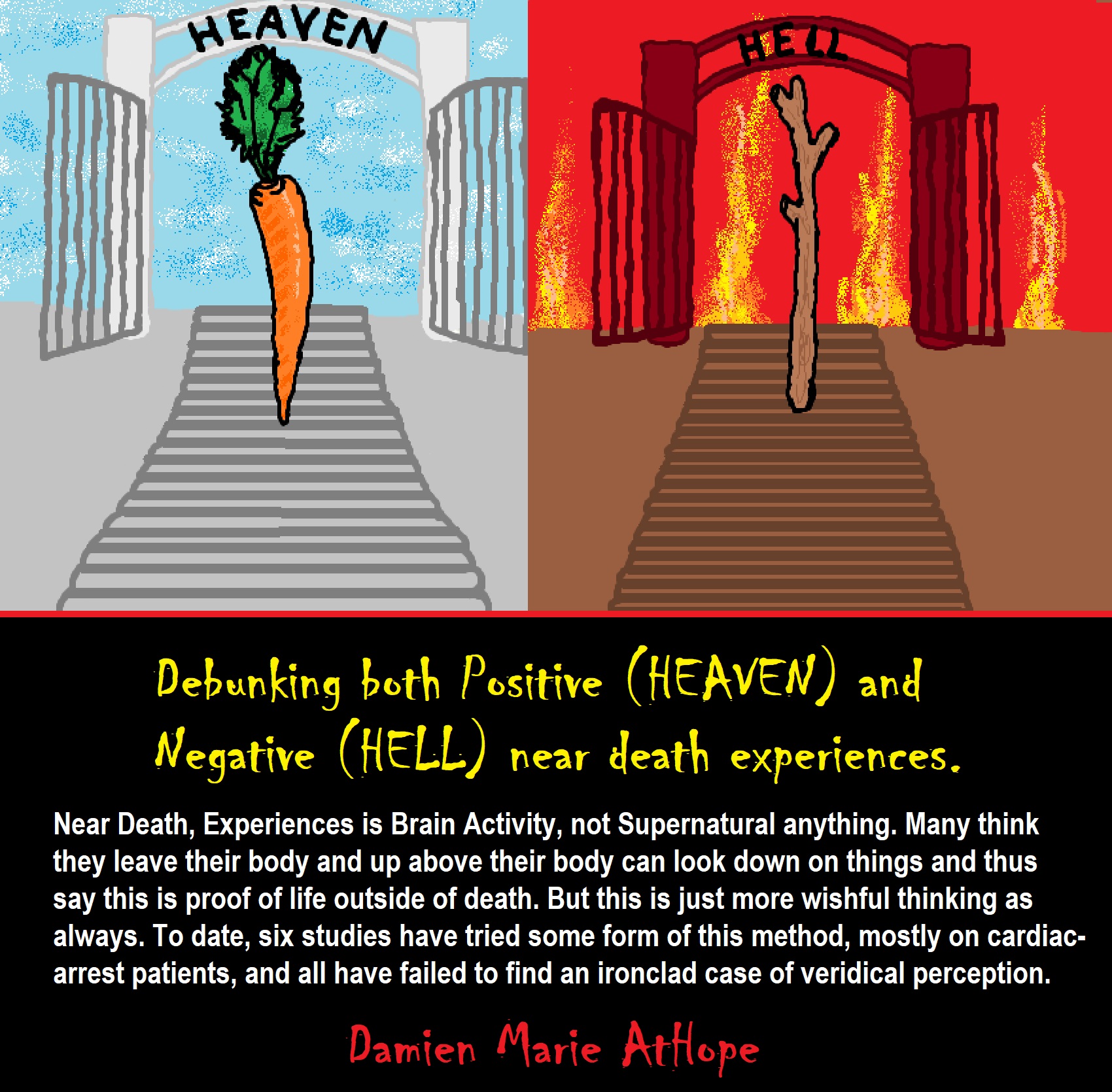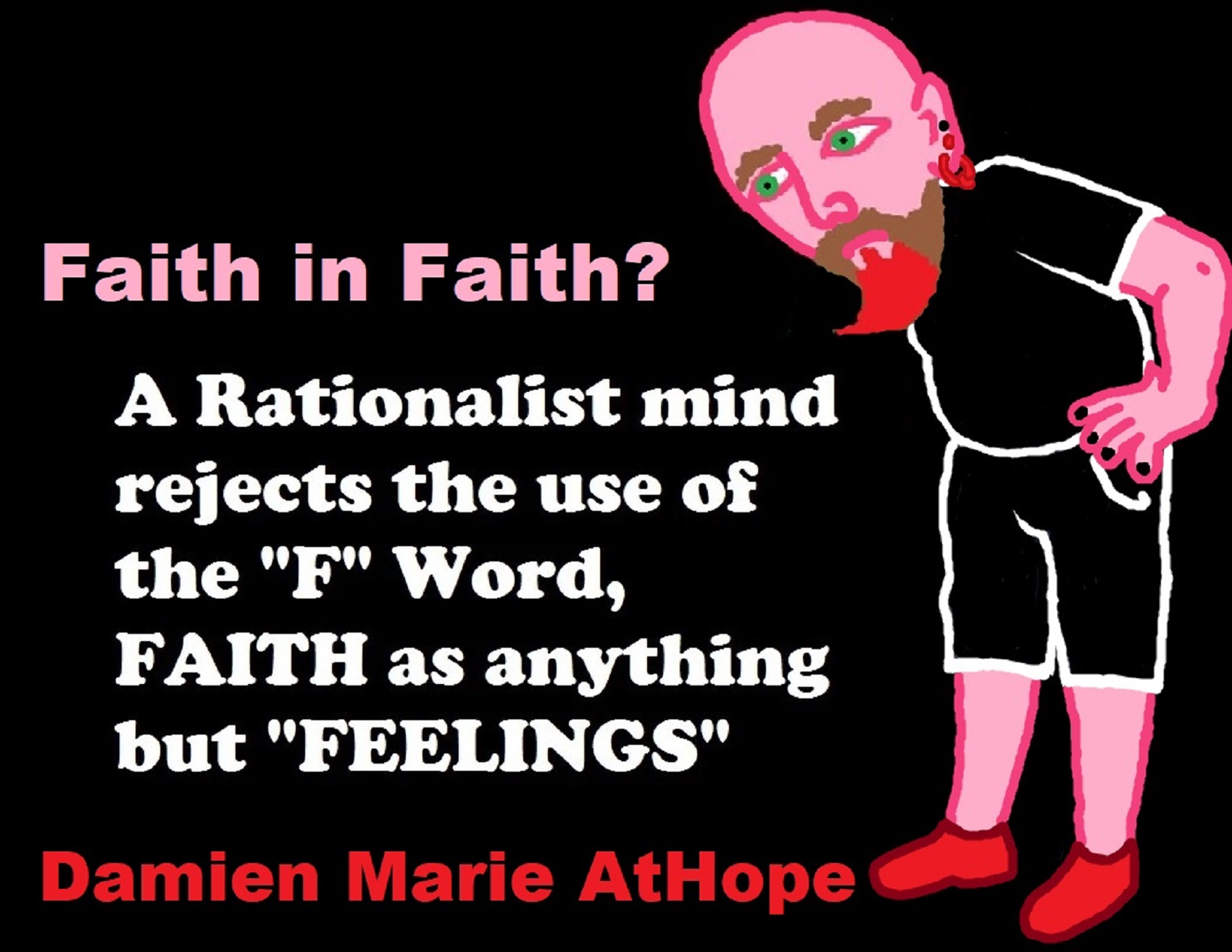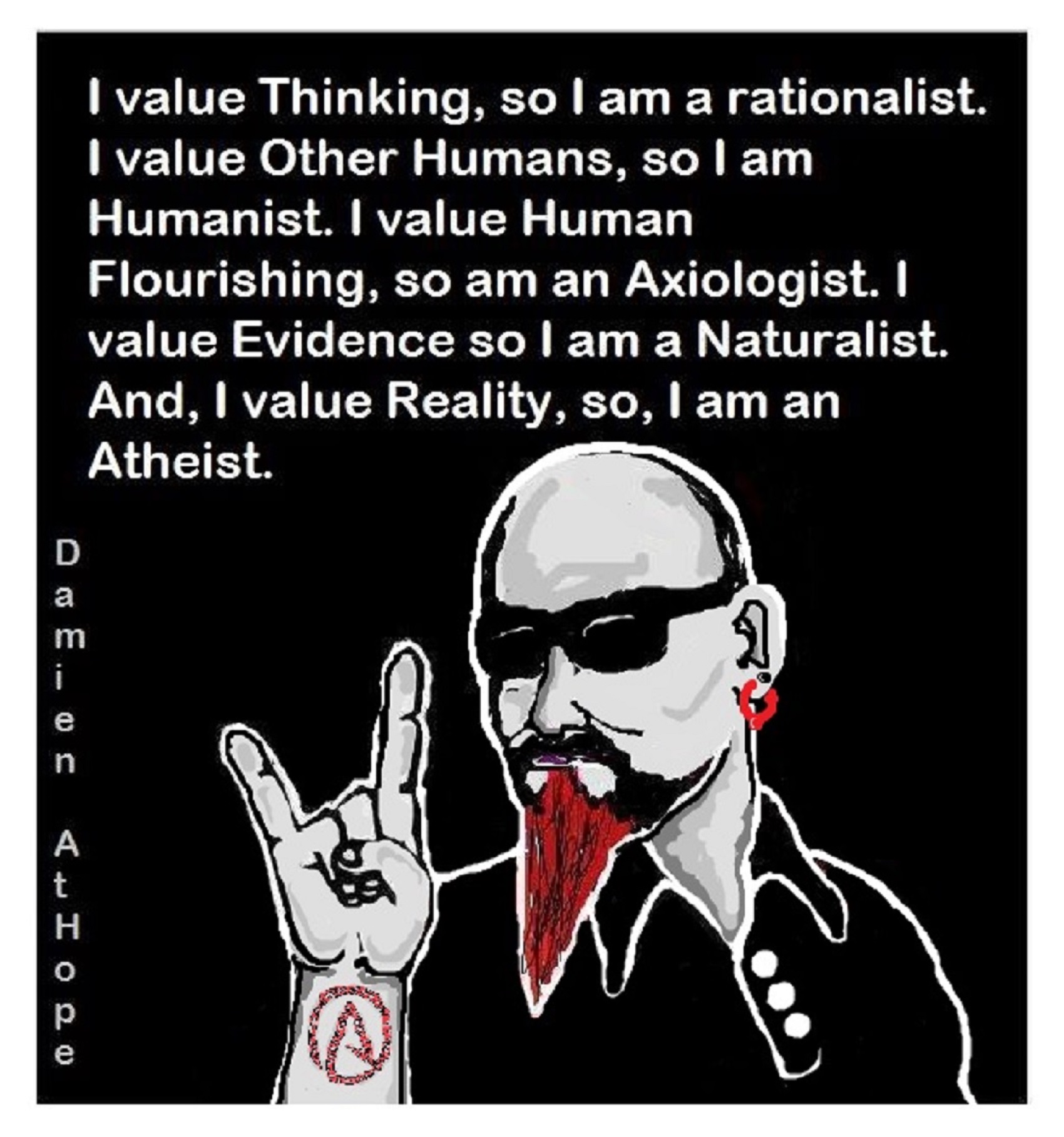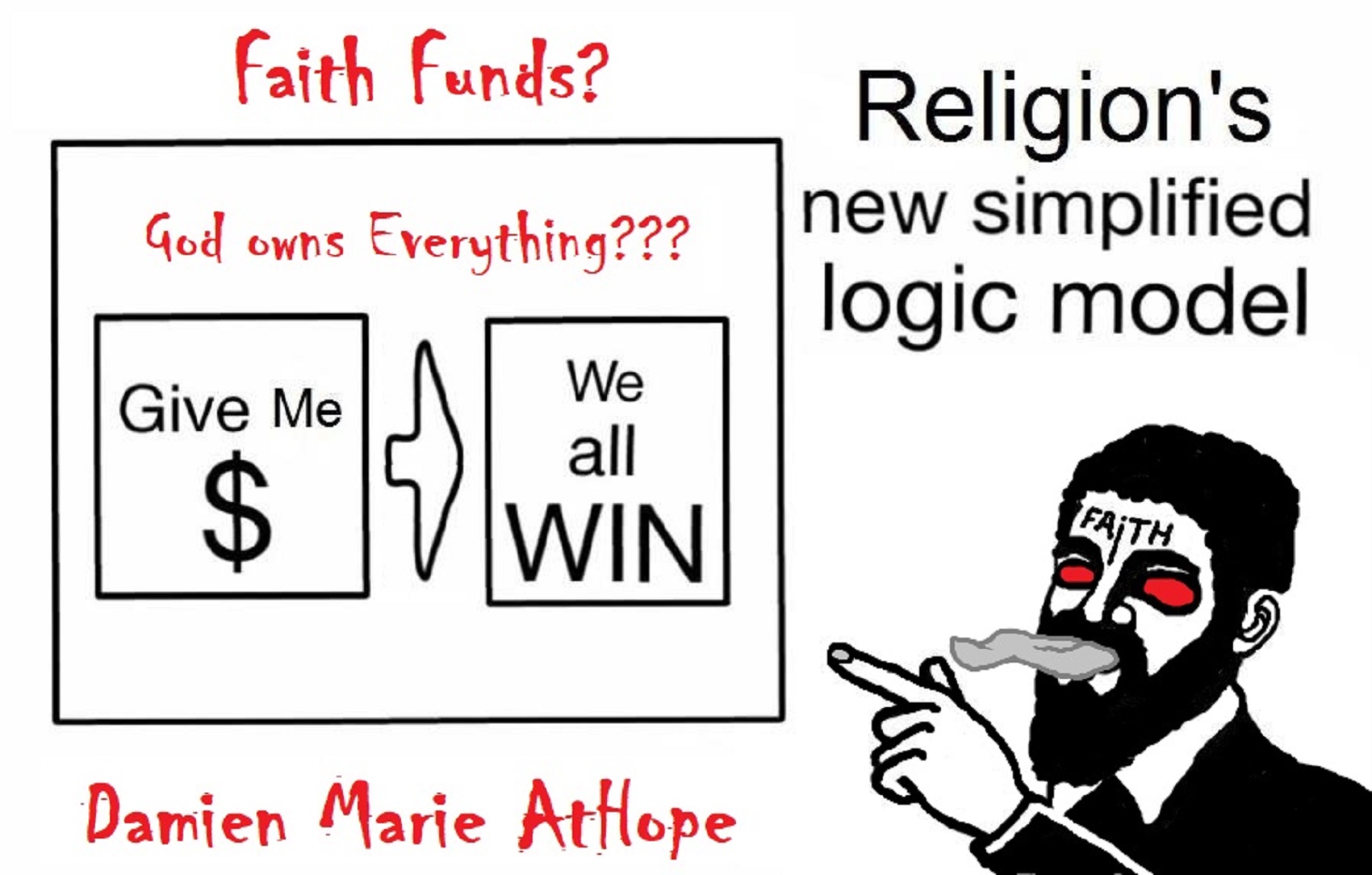
Religion is power over your mind. With faithism, in general, one is giving into not knowing belief as proof of some claimed knowing. Religious people are commonly influenced to not look but just believe on the will to believe things not known. Most “Religious people” claim a Full-faith before even reading half of the holy book they claim is completely true even if they don’t know all its claims as truth. Well, sadly, too often there is little difference between an obvious delusion we may reject, a cult we fear, and a religion we accept or support, then it’s currently in flavor, and the number of people involved…
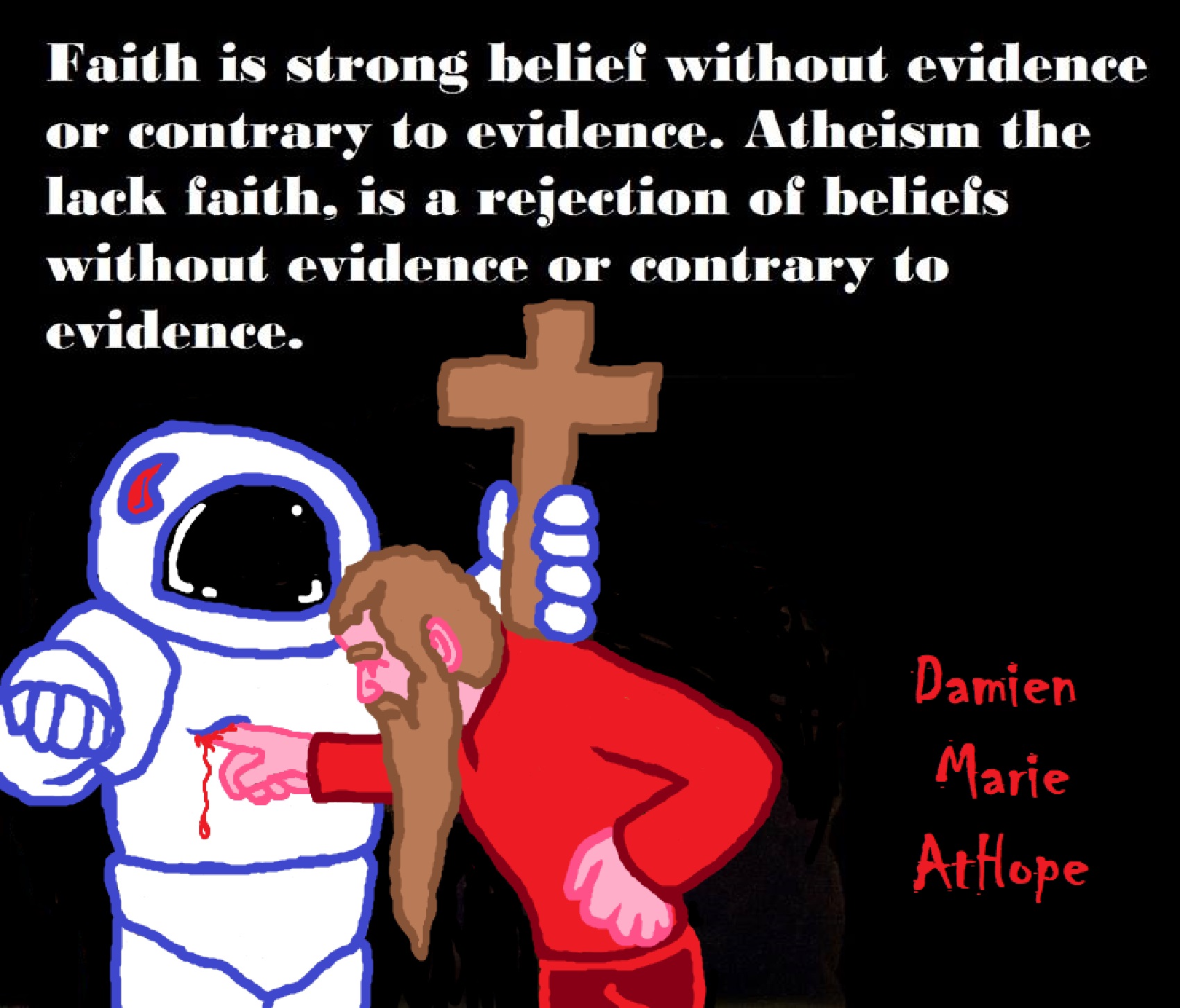
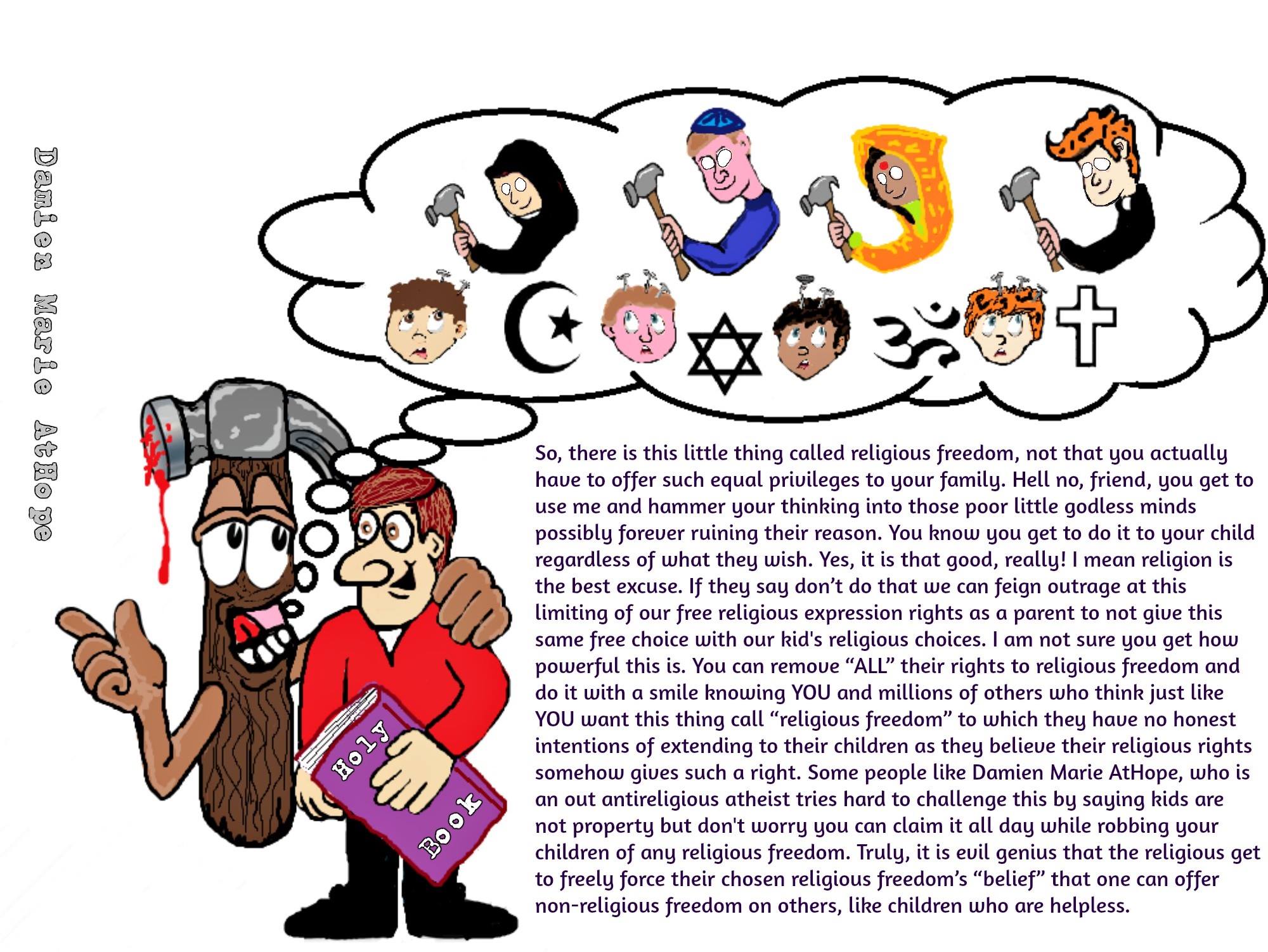
Religion and Poverty?
“Religion and poverty are two of the world’s most enduring social and cultural phenomena. They have a long and eventful history, and are not separate from one another, but closely interrelated: on the one hand, there is a long tradition of religiously motivated poverty; on the other hand, giving to the poor is often seen as a religious duty. In recent years, faith-based organizations have been recognized in research as an important factor in global poverty reduction.” ref
“A number of important questions are worth exploring. First, to what extent are religion and poverty connected at the demographic level (Keister, 2011; Thorat, 2010; Hoverd et al., 2013)? Are members of certain religions more affected by poverty than others? In which social and geographical areas is this the case and why? What historical developments, which combine religious affiliation and poverty, have become entrenched at the social level? Are there other socio-economic characteristics that connect religion and poverty (for instance, that certain religions are mainly lived by migrants)? Is the link between religion and poverty consequently due to other socio-economic factors, and is religious belonging a random characteristic?” ref
“In exploring such questions it is important that lived religious practice be distinguished from the mere belonging to a religion, and in both cases, local characteristics have to be taken into account in each case. After all, religions, especially the ‘great world religions’, are extremely diverse in themselves and the composition of their adherents is inevitably heterogeneous. A case in point concerns the relationship between religious affiliation and beliefs about the actual causes of poverty. A study conducted in the United States (Hunt, 2002) showed that “religious factors” have a significant influence on the assumed causes of poverty and whether this is explained as “individualistic”, “structuralist” or “fatalistic.” ref
“Questions also arise about the role of religion in the lives of poor people (Sullivan, 2011; Yurdakul and Atik, 2016; Puffer et al., 2012; Dillen and Van Hoof, 2016; Rogers and Konieczny, 2018). First, it seems trivial to note that religions (which can be understood as complex cultural practices and belief systems) can sometimes play an important role in the lives of poor people to help them understand themselves and interpret the world around them, their social and economic position, and their immediate society. For example, a recent study (Hoverd and Sibley, 2013) examining a representative sample in New Zealand showed that religious people living in deprived neighborhoods have higher subjective well-being than their non-religious neighbors living in the same area. Under impoverished conditions, the difference in well-being between religious and non-religious people is evident, while in affluent neighborhoods, subjective well-being was high regardless of religiousness.” ref
“All religions have something to say about poverty, and other issues related to social inequality, and offer implicit and explicit interpretative templates (Beyers, 2014). Religions can relieve and burden, they can stand against poverty and legitimize resistance, but they can also justify inequalities, poverty, and exploitation. It is the case that religious belief systems can frequently be understood in different ways and that they can produce texts, discourses, and practices that can be interpreted multifariously. For researchers, and especially for those people and institutions that are engaged in poverty alleviation, the potential impact of religions—whether positive or negative—is clearly of importance and interest.” ref
“Wealth ownership is highly concentrated in the United States: the top 1 percent of households have consistently owned about 33 percent of net worth, and wealth inequality has gotten even worse since the recession. High levels of wealth provide great advantages, but even a small amount of savings can mitigate the effect of financial shock. It is relatively enduring within and across generations and can have significant educational, occupation, political and social advantages. Wealth provides a buffer against financial emergencies and can generate more wealth when it is reinvested.” ref
“Researchers are only beginning to understand the complex individual and family processes that affect saving and wealth ownership, but religion has emerged as an important part of the process. Religion embodies a great deal about a person’s general approach to the world—their conception about how the world does and should work—and we are learning that it can shape financial outcomes in surprising ways.” ref
“There are two broad reasons that religion and wealth are related. First, religion affects wealth indirectly through its very strong effect on important processes such as educational attainment, marriage, decisions to have kids, how many kids people have, and women’s decisions to work or stay home with their kids. Religion affects these behaviors and processes, and they, in turn, affect household income, expenses, and the amount of money left over to save. Understanding these processes alone accounts for a large portion of the religion-wealth association.” ref
“Second, religion can also affect wealth directly by influencing intergenerational processes, social relations, and orientations toward work and money. Intergenerational processes (the transfer of both religious ideas and wealth from parents to children) and social relations (contacts made through the religious groups who can provide information, capital, and other resources) are certainly important.” ref
“One of the most fascinating explanations is the direct effect religion can have on orientations toward work and money. Many of the important decisions about family, work, and saving have roots in their religious beliefs. For example, in some conservative religious groups—including Conservative and Black Protestant denominations—becoming a minister, working for a social service agency, or becoming a career missionary are considered good jobs. A calling into one of these careers can be important for religious reasons, but these jobs don’t necessarily require high levels of education, don’t typically pay well, and won’t make it easy to save and accumulate wealth.” ref
“Some examples can help illustrate these processes. Results from analyses of the National Longitudinal Survey, the Health and Retirement Study, and the Economic Values Survey suggest that Conservative Protestant and Jewish families tend to be polar opposites on most measures of wealth. The results also show that behaviors regarding family, education, work, and saving help explain why. Conservative Protestants often favor large families and a traditional gender division of labor in which women do not work out of the home.” ref
“Conservative Protestants have also had, on average, lower levels of education than other groups. Having a large family, low education levels for parents, and a single income-earner both make saving difficult and can lead to low wealth. Many Conservative Protestants also view money as belonging to God. People are considered managers of the money but should consult God or God’s agents on earth regarding decisions to use their money. Tithing as a percent of income tends to be high in these faiths, and the desire to accumulate excess assets in person bank accounts can be seen as undesirable. As this suggests, Conservative Protestants have been at the low end of the wealth accumulation.” ref
“At the opposite end are Jewish families. Many Jewish mothers also stay home with their children for at least the first years of the child’s life. But Jewish mothers are more likely to have high levels of education and a relatively small number of children. This makes it easier for the Jewish mother to devote time and other resources to early education. The Jewish mother is also more likely to return to work after her children enter school, adding to income and making saving and wealth accumulation more possible. Jewish families are also more likely to take a pragmatic approach to money—that is, money is more likely to be seen as a tool or a vehicle for taking care of family needs and other practical concerns—and tend to accumulate relatively high amounts of wealth.” ref
“White Catholics are an important example because their position in the wealth distribution has changed considerably in recent years. Less than a generation ago, white Catholics were relatively disadvantaged: they had low educations, low income, low wealth. Important shifts in orientations toward family and women’s roles in the family were important contributors. White Catholics now have much smaller families than in prior generations and Catholic women are as likely as Mainline (or Liberal) Protestants to work out of the home. Combined with a pragmatic, pro-saving orientation toward work, this has propelled white Catholics up in the wealth distribution in recent years.” ref
“Mormons (LDS) are also interesting because they combine elements of groups that are otherwise distinct. Mormons tend to be religiously conservative, favoring large families and traditional gender roles. However, Mormons typically have high educations and report more pragmatic orientations toward money and accumulation. The result appears to be that Mormons have higher wealth than other conservative Protestant groups, although these findings are a bit more speculative than for other groups because Mormons make up a relatively small proportion of the U.S. population.” ref
“Naturally, these relationships and processes are much more nuanced than simple examples suggest; there are very important differences within each of the groups I mention and a large number of other factors affect wealth accumulation as well These examples also leave open questions about happiness: wealth does not necessarily lead to greater satisfaction, and some argue that investing in religion can have both intangible and tangible benefits. However, it has become clear that the relationship between religion and wealth is very strong. The recent recession underscored the need for savings at all levels of wealth, and the importance of religion in American culture suggests that this may be an important part of the explanation for growing inequality.” ref
Why Are the Poor More Religious? BY
The New York Times’ policy and statistics blog, The Upshot, wrote an article about the hardest places to live in the United States. The rankings, by county, included a variety of factors including education, income, unemployment, disability, life expectancy, and obesity. Based on the information, The Upshot identified ten counties clustered in the Appalachian and southeast regions of the country as the worst places to call home.” ref
“Interestingly enough, people living in these places are also more likely than those in wealthier sections of the country to Google search terms related to religion. The Google search terms common to these regions, which include “antichrist,” “about hell,” and “the rapture,” suggest that fundamentalism and its hellfire and brimstone visions of the apocalypse play a significant role in the lives of people who live in these impoverished regions.” ref
These findings from The Upshot are reinforced by previous research into the connections between religion and poverty. According to a 2010 Gallup poll, there is a strong, positive correlation between strict adherence to religion and privation. But while the Gallup poll reports a link between religious devotion and poverty, it doesn’t provide any insight into why it exits.” ref
“A study by independent research Dr. Tom Rees, published in the Journal of Religion and Society, suggests that in places without strong social safety nets to provide people with opportunities for upward mobility, people are more likely to rely on religion for comfort. As contradictory as it may seem, when someone is suffering it may console him or her to think that the end of the world is near—that God will bring it to a close and reward the faithful with everlasting joy. Doom and gloom predictions about the trials and tribulations that humanity will face before the apocalypse, prevalent in Christian fundamentalism, may also help some people attribute a higher purpose to their suffering, explaining it as “part of God’s ultimate plan.” It’s also worth noting that in areas with little to no social supports, the local church may provide for people’s basic needs through free childcare programs, food pantries, and clothing drives.” ref
“Although religion can provide real assistance and a sense of security to disadvantaged individuals, that doesn’t mean it actually solves the problems associated with poverty. In fact, in an analysis of the aforementioned study, the British Humanist Association warned that government promotion of religion as a positive social influence could mask larger social problems that contribute to poverty, such as a lack of access to education.” ref
“Humanism, unlike fundamentalist religious ideology, is not concerned with hell or the nihilistic obliteration of a fallen human race. Instead, humanism is committed to ensuring that this life is the best that it can possibly be, since it’s the only life that any of us have. However, if we want to help improve the lives of people living in some of the “worst” places, we’re going to need more than rational arguments. We’re also going to need to ensure that people’s basic needs are met and that they have opportunities for security and advancement.” ref

Religion and Capitalism?
“Here is a little on how religious ideologies encourage our participation in capitalism. When only 2,000 people have as much money and power as 60% of the rest of humanity (Oxfam), what compels workers to continue to show up for underpaid labor?” ref
“Marx argued that religion, as an ideology, maintains this system of inequality. In Marx’s view, those without wealth or power continue to work for low wages because they have internalized the idea that any type of work is, itself, an inherent moral value. Within a religious, capitalist culture, people work to benefit the rich because they believe that we will be rewarded in the afterlife.” ref
“Marx once described religion as “the opium of the people” which is a commonly cited and commonly misunderstood quote. Many dictatorial regimes have, historically, misappropriated this Marxist argument to justify a violent crackdown on religion in their countries (Eagleton 128). At the time of Marx’s claim, opium was legal and was widely used to relieve pain. So, he was not arguing that religion was some kind of addictive drug that people behave in an unreasonable manner. Rather, he was arguing that religion was a comfort to people who were suffering (Stein and Stein 18).” ref
“Marx’s exact quote on the matter is,
“Religious suffering is, at one and the same time, the expression of real suffering and a protest against real suffering. Religion is the sigh of the oppressed creature, the heart of a heartless world, and the soul of soulless conditions. It is the opium of the people. The abolition of religion as the illusory happiness of the people is the demand for their real happiness. The demand to give up the illusion about its condition is the demand to give up a condition which needs illusion.” ref
“Marx was not seeking to punish or eliminate religion but, rather, did not consider religion to be as real as a person’s material necessities required to survive (Eagleton 128). Marx and Engels did not view religion as an inherent part of human nature but, rather as a construction offered by powerful groups in order to maintain the “false consciousness” necessary to keep workers working (Stein and Stein 18). Marx argued that power flows from the top of society downward to influence the internalized ideologies of those with less power (Mascia-Lees 157).” ref
“Marx and Engels’ works have had a variety of influences across the world since their original publications: socialism has taken hold in a variety of degrees across the world with varying levels of success, at the same time, socialism has been rejected in other parts of the world resulting in a strengthened cultural commitment to capitalism (also with varying levels of success). In cultural anthropology, Marx and Engels’ influence resulted in a new theoretical approach toward the study of culture which we call The Marxist Approach (Kuper 182–183). The Marxist Approach examines power imbalances that exist within and across cultures. Specifically, the Marxist Approach considers how “material conditions” (or, the production of things that people need to survive) lead to the spread, or elimination, or maintenance of particular cultural trends, beliefs in traditions.” ref
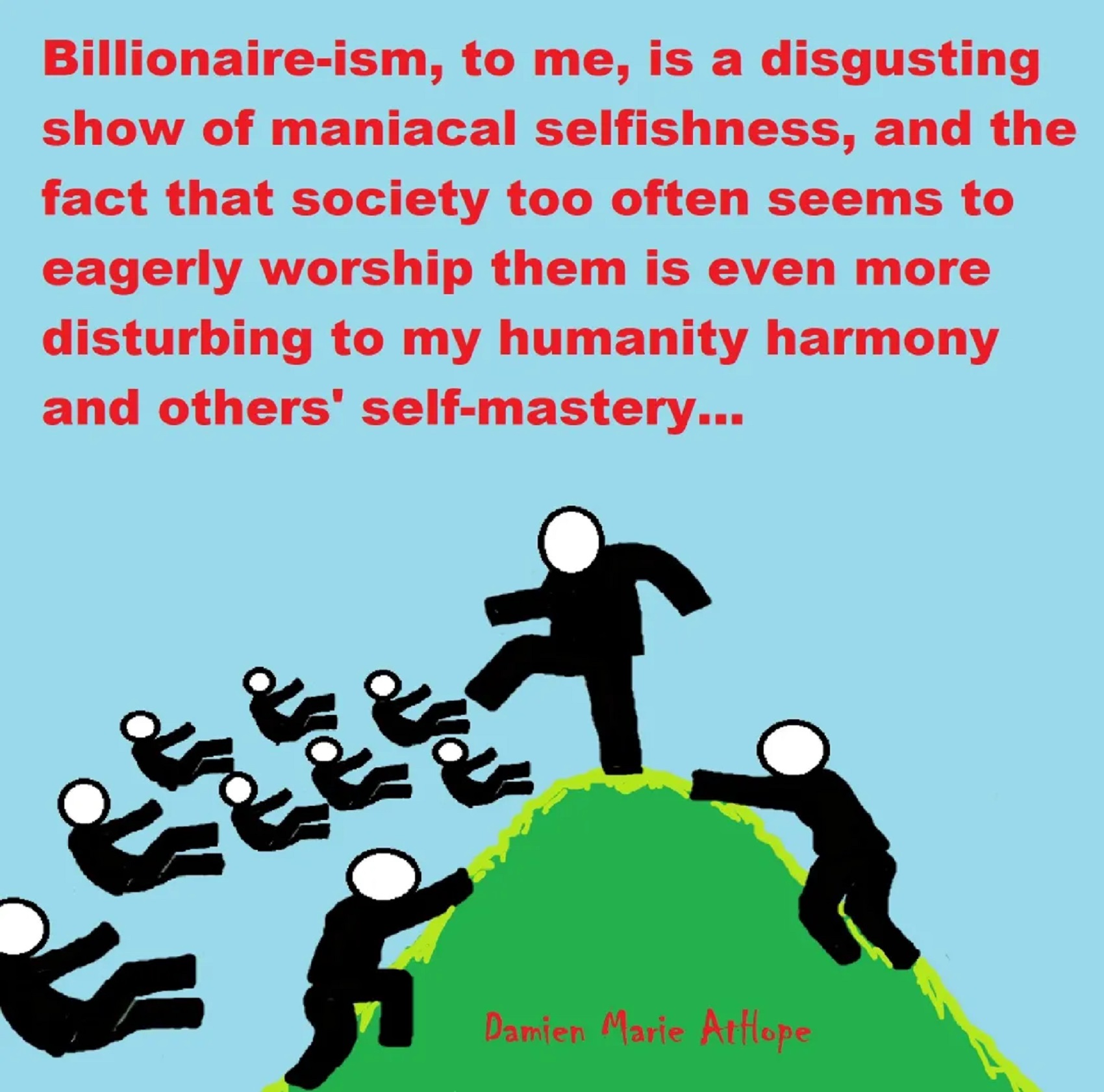
Capitalism as Religion?
“One of the best-known classical versions of this much discussed claim was formulated by Walter Benjamin in 1921 in a short and cryptic fragment entitled Capitalism as Religion. The fragment was not intended for publication and was never fully elaborated; it remains open for different readings. Benjamin’s thesis is usually interpreted as a critical inversion of Max Weber’s so-called thesis, i.e. his conceptualization of the relationship between religion and the capitalist system. There is, however, some evidence that the stimulus for this inflection of arguments was given by Weber himself. Moreover, it undoubtedly bears the stamp of the ‘underground influence’ of Benjamin’s mentor and ‘intellectual predecessor’ (Jameson 1999): Georg Simmel.” ref
“Benjamin explicitly refers to Weber by saying that capitalism is ‘not only a religiously conditioned construction, as Weber thought’, but ‘an essentially religious phenomenon’. The fragment opens with a provocative statement: ‘one can see in capitalism a religion, that is to say, capitalism essentially serves to satisfy the same worries, anguish, and disquiet formerly answered by so-called religions’. In other words, capitalism became a functional equivalent of established religious systems. However, it did not gain this position simply at the expense of traditional religions, in the consequence of institutional secularisation – but rather, to use an economic expression, as a result of a hostile takeover. In the polemic with Weber Benjamin holds that Western Christianity did not stimulated the emergence of capitalism, but rather transformed into capitalism. Benjamin identified four distinctive characteristics of the religious structure of capitalism.” ref
“First, capitalism is a religion which consists entirely of cult; it has no specific dogma nor theology. Secondly, capitalism is characterized by the permanent duration of the cult – ‘without respite and without mercy’. There is no ‘weekday’, no day ‘that would not be a holiday in the awful sense of exhibiting all sacred pomp’. Thirdly, this is a cult that engenders guilt/debt (the German word Schuld has a double meaning; Benjamin mentions in this context ‘the daemonic ambiguity of the word Schuld’): ‘capitalism is presumably the first case of a cult that does not bring expiation, but burdens with guilt/debts’. And, finally, the last characteristics of the religious structure of capitalism is that ‘its God must become concealed’.” ref
“Benjamin has never revealed the name of this hidden deity which has taken the place of the Judeo-Christian God. To identify the God of capitalist religion,
and to properly understand Benjamin’s capitalism/religion equation, we have to dig into the sources of ideas and images he is deploying. The dependence on Weber is rather obvious. The fragment refers explicitly to Nietzsche, Marx, Freud, Ernst Troeltsch and Gustav Landauer. A general reference to Gustav Landauer’s book A Call for Socialism, which contains the sentence ‘money has become a god, it has become a man-eater’ (Landauer 1920: 144), hints at the identity of the anonymous capitalist deity (see Hamacher 2003: 98; Soosten 2003: 134). Troeltsch might have inspired Benjamin by the statement (from Social Teachings of Christian Churches and Groups) that with John Calvin capitalism ‘has broken into Christianity’. But there are also other possible inspirations never mentioned by Benjamin.” ref
“As some critics have pointed out, the title of the fragment is directly borrowed from Ernst Bloch’s Thomas Münzer, Theologian of Revolution – a book which appeared earlier in the same year (1921). Bloch was a Marxist, a member of Max Weber’s circle in the years 1912-14, and a close friend of Walter Benjamin. The expression ‘capitalism as religion’ appears indeed in Bloch’s book, but it is equally possible that it was Bloch who borrowed the phrase from Benjamin (they frequently exchanged ideas, and Benjamin later even accused Bloch of stealing his own formulations). Be that as it may, the fragment in which Bloch refers to ‘capitalism as religion’ is very short, and the concept itself is not elaborated.” ref
“The capitalist economy today, says Bloch, is totally liberated from all qualms of Christianity, and the responsibility lay with Calvin. According to Bloch, Calvin deviated from the Christian radicalism by reducing the tension between everyday life and a life hereafter; he ‘unleashed the everyday life’. The majesty ascribed to Christian God transferred to bookkeeping, and the sense of divine soon became reduced to ‘a paradoxal relaxation of a dead Sunday’. In the end, Calvin’s reform ‘brought about not just a simple abuse of Christianity, but the total apostasy from Christianity, or even the aspects of a new religion: capitalism as religion and the Church of Mammon’ (Bloch 1967: 142f.).” ref
“There are some obvious similarities between Bloch’s and Benjamin’s statements. The phrase ‘Church of Mammon’, however, leads us to Georg Simmel, who was an intellectual predecessor of both thinkers – and especially of Walter Benjamin, who attended Simmel’s seminar in 1912 and forever ‘failed to escape the force field of Simmel’s thought’ – as it was stated by Frederic Jameson (1999) and meticulously documented by Marian Micko (2010).” ref
“The intellectual context of his argument allows us to identify the capitalist God that ‘must become concealed’ as Mammon – the money. This conclusion finds its justification in Benjamin’s own note, saying ‘compare the holy iconography of various religions on one hand with the banknotes of various countries on the other’. And further: ‘to examine what associations money has formed with myth in the course of history – until it could seize enough mythical elements from Christianity to be able to constitute its own myth’. This myth would not develop an explicit dogma or theology; if there is any ‘capitalist doctrine’, then probably the gist of it was given by Marx in his Capital: ‘Accumulate! Accumulate! That is Moses and the prophets!'” ref
“If capitalism has no specific dogma, then what counts are the actions, which take the form of cult practices. As Michael Lowy (2010) put it: ‘Money, in the form of paper-notes, would be the object of a cult similar to the one of saints in “ordinary” religions.’ This cult would have to be permanent: Benjamin has probably absorbed Weber’s description of the religious value set in Protestant ethics on restless, continuous, and systematic work; analogous to it, capitalist practices are also characterized by their permanence; but, ironically, in the reversal of Puritan disregard for religious feasts, now every day is a holiday because it is fully devoted to the celebration of this-worldly deity. And, finally, as to the statement that this cult engenders guilt/debt: according to Burkhard Lindner, ‘the historical perspective of the fragment is grounded on the premiss that one cannot separate, in the system of capitalist religion, the “mythical guilt” and the economic debt’ (quoted after Lowy 2010).” ref
“After almost a century we have to acknowledge Benjamin’s foresight: today, even a ‘relaxation of a dead Sunday’ is abolished. The stock exchange operates continuously and shopping malls are open each and every day until all hours; the worship continues ‘without respite and without mercy’. Those who are not convinced should consider Falk Wagner’s comment that a consciousness, defined by omnipotence and omnipresence of money, would have to be considered as religious consciousness, although not in its self-understanding (Wagner 1984: 13). And that is exactly the point that Benjamin is making in the closing sentence of his fragment: ‘it contributes to the knowledge of capitalism as a religion to imagine that the original paganism certainly grasped religion not as a “higher” “moral” interest, but as the most immediately practical – that, with other words, just as today’s capitalism it had not been aware of its “ideal” or “transcendent” nature.” ref
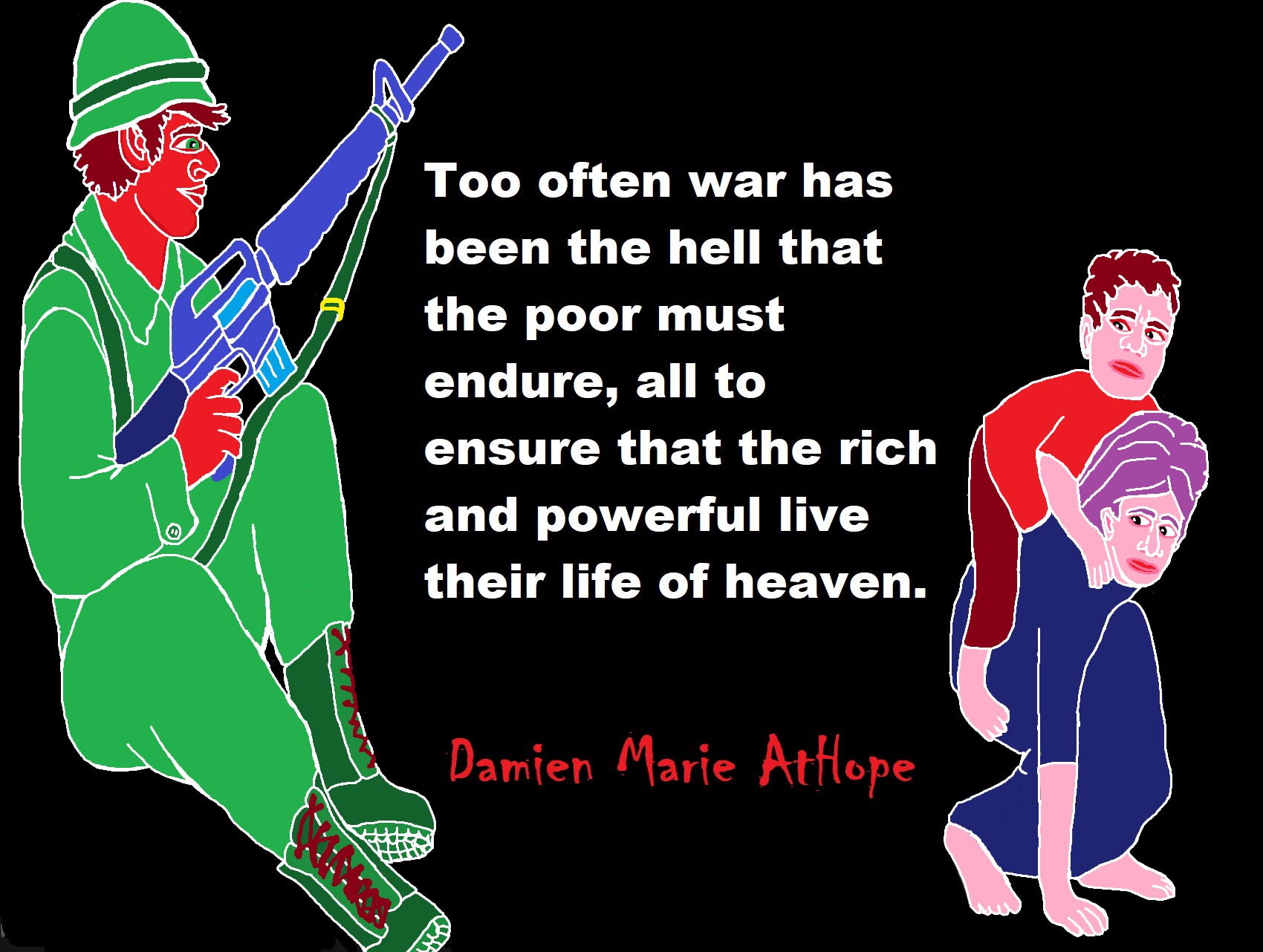
Religion and the Rise of Capitalism?
“Critics of contemporary economics complain that belief in free markets–among economists as well as many ordinary citizens–is a form of religion. And, it turns out, that in a deeper, more historically grounded sense there is something to that idea. Contrary to the conventional historical view of economics as an entirely secular product of the Enlightenment, Benjamin M. Friedman demonstrates that religion exerted a powerful influence from the outset. Friedman makes clear how the foundational transition in thinking about what we now call economics, beginning in the eighteenth century, was decisively shaped by the hotly contended lines of religious thought within the English-speaking Protestant world.” ref
“Beliefs about God-given human character, about the after-life, and about the purpose of our existence, were all under scrutiny in the world in which Adam Smith and his contemporaries lived. Friedman explores how those debates go far in explaining the puzzling behavior of so many of our fellow citizens whose views about economic policies–and whose voting behavior–seems sharply at odds with what would be to their own economic benefit. Illuminating the origins of the relationship between religious thinking and economic thinking, together with its ongoing consequences, Friedman provides invaluable insights into our current economic policy debates and demonstrates ways to shape more functional policies for all citizens.” ref
“Ben Friedman’s Religion and the Rise of Capitalism is an expansive and intricate tapestry depicting the progression and interaction of ideas and events in economics and (mainly Protestant) religion across four centuries. The richness of the woven strands does not obscure the thematic integrity of the book’s central argument.”—Bruce MacLaury, President Emeritus, The Brookings Institution.” ref
“Religion and the Rise of Capitalism takes longstanding debates over religion and capitalism in a surprising new direction. Benjamin Friedman makes his case with the erudition and particularity of a leading academic economist. His arguments are sure to generate new thinking and debate from all sides.”—Christopher DeMuth, Distinguished Fellow, Hudson Institute.” ref
“Ben Friedman’s fascinating and impressive account of the interaction of economics and religion combines both mastery of the history of economic theory and a profound engagement with the complexities of religious belief, both in Britain and America. Economists, theologians, and students of modern intellectual history will find here a truly valuable resource.”—Harold W. Attridge, Sterling Professor of Divinity emeritus, Yale University.” ref
“Citizens are not simply pursuers of narrowly defined economic self-interest, sometimes to the point of seeming self-harm. Religion and the Rise of Capitalism makes sense of these choices with respect and insight, by showing the power of religious ideas to shape character, and in turn policy.”—Adam S. Posen, President, Peterson Institute for International Economics.” ref
“Benjamin Friedman has produced a worthy piece of intellectual history, with important implications for public policy. His book, to use an appropriate adjective, is enlightening.”—Robert Solow, Institute Professor Emeritus, MIT.” ref
“With his focus on the role of religion in the evolution of economic thinking, Benjamin Friedman has given us an original and brilliant new perspective on the terrifying divisions of our own times. No book could be more important.”—George A. Akerlof, Nobel Laureate in Economics.” ref
“In this pathbreaking study, Benjamin Friedman follows the continuing influence of theology on economics from Adam Smith into the twentieth century and even provides an analysis of why so many religious people in the U.S. today vote contrary to their own economic interests. A subtle and insightful book.”—Daniel Finn, Clemens Professor of Economics and Professor of Theology, College of St. Benedict and St. John’s University.” ref
“Economists and others curious about what sparked the classical economics of Smith and Schumpeter, later Keynes’s paradigm and some of the new theories emerging now must read this colossal work. On top of that, the book puts to rest the belief that economists can’t write.”—Edmund Phelps, Nobel Laureate in Economics, author of Mass Flourishing.” ref
“In this massively researched and scholarly book, Friedman shows that religious thinking was present at the creation of the young science of economics, and that its influence on modern economic thought has been profound and lasting. Not only in academic circles, but also in present-day American political discourse, religion has been powerful both for good and for ill. The author’s Moral Consequences of Economic Growth was a model of how to communicate complex factual material and sophisticated reasoning to the general reader. This new book does at least as good a job.”—A.M.C. Waterman, St John’s College, Winnipeg.” ref
“A lively, lucid story of self-interest mutating into something beneficial, a story crucial to the emergence of modern economics.”—David D. Hall, author of The Puritans: A Transatlantic History. Ben Friedman’s Religion and the Rise of Capitalism is from one of the nation’s preeminent experts on economic policy, a major reassessment of the foundations of modern economic thinking that explores the profound influence of an until-now unrecognized force–religion. Click here to purchase Religion and The Rise of Capitalism.” ref

Religion and Banking?
“The Knights Templar set up a prosperous network of banks and gained enormous financial influence. Their banking system allowed religious pilgrims to deposit assets in their home countries and withdraw funds in the Holy Land. And the term “Holy Land” roughly corresponds to the State of Israel, Palestinian territories, western Jordan, parts of southern Lebanon and southwestern Syria. Jews, Christians, and Muslims tend to regard it as holy.” ref, ref
“The Poor Fellow-Soldiers of Christ and of the Temple of Solomon (Latin: Pauperes commilitones Christi Templique Salomonici), also known as the Order of Solomon’s Temple, the Knights Templar or simply the Templars, was a Catholic military order founded in 1119, headquartered on the Temple Mount in Jerusalem through 1128 when they went to meet with Pope Honorius II. They were recognized in 1139 by the papal bull Omne datum optimum of Pope Innocent II. The order was active until 1312 when it was perpetually suppressed by Pope Clement V by the bull Vox in excelso.” ref
“The Templars became a favored charity throughout Christendom, and grew rapidly in membership and power. They were prominent in Christian finance. Templar knights, in their distinctive white mantles with a red cross, were amongst the most skilled fighting units of the Crusades. Non-combatant members of the order, who made up as much as 90% of their members, managed a large economic infrastructure throughout Christendom, developing innovative financial techniques that were an early form of banking, building its own network of nearly 1,000 commanderies and fortifications across Europe and the Holy Land, and arguably forming the world’s first multinational corporation.” ref
“The order became known for its austere code of conduct (which included no pointy shoes and no kissing their mothers, rules outlined in “The Rule of the Templars”) and signature style of dress, which featured a white habit emblazoned with a simple red cross. Members swore an oath of poverty, chastity, and obedience. They weren’t allowed to drink, gamble, or swear. Prayer was essential to their daily life, and the Templars expressed particular adoration for the Virgin Mary.” ref
“As the Knights Templar grew in size and status, it established new chapters throughout Western Europe. At the height of their influence, the Templars boasted a sizable fleet of ships, owned the Mediterranean island of Cyprus, and served as a primary bank and lending institution to European monarchs and nobles.” ref
The Knights Templar: Military order or the First Financial-Services Company?
By Tom Teodorczuk
“New book details how the military order operated 13th-century banking and crowdfunding practices. And one should think to ask, how did the Templars become such an economic force? The Templars are known for the drama of their downfall or their role as medieval special forces. But they had a vast business and commercial empire, with lands generating agricultural produce and revenue all the way from Ireland to Cyprus and the Crusader states. They owned property in big cities which was rented out and chartered shipping in worldwide ports.” ref
Then there was the banking side of things. It’s sometimes said the Templars were the world’s first bankers. There was a system of banking of deposits — King John of England deposited the crown jewels with the Templars in London when he was in trouble before the Magna Carta. But that doesn’t do them justice. They weren’t the first world’s bankers. They were providing the world’s first financial-services company.” ref
In what ways were they a financial-services company?
“For example, in France for about a hundred years during the 13th century, the Templars subcontracted huge swathes of French Treasury functions. They were paying royal officials there on behalf of the crown and running the books for the French King, his brothers, and his mother. They were collecting, on behalf of the Pope, the crusading taxes levied by the church in England, France, Hungary, and parts of Spain and Italy.” ref
“Their spread of properties all across Europe and presence in just about every kingdom made them unique. They crossed boundaries and weren’t subject to the authority or policies of any particular king. They were tax-exempt in many jurisdictions across Europe. If you think about the deal between Google and the Irish government, the Templars had that times 20.” ref
How could they afford this?
“They had a wide pool of donors of every sort. They were pulling in money from at the top end — Alfonso I, the King of Aragon, left them a third of his kingdom in his will and Queens and Kings gave them huge landed estates. They were also the recipients of popular donations, what today we would call crowdfunding. People left them in their wills a donkey or a little plot of land, tiny donations that when you added them up were massive and funded military operations.” ref
“The early masters of the Templars were adept at raising finance. As soon as the Templars were set up in 1119-20, Hughes de Payens the first Grand Master, didn’t hang around waiting to get killed in Jerusalem. He went back to Europe and toured the royal courts attracting high-level investment. He persuaded Henri I, son of William the Conqueror, to raise treasure from his barons which was then funneled back to fund this new organization he had set up. It was like raising venture capital. As it turns out in that instance, it didn’t work out very well because the men he convinced to join the order were killed and the money he raised was wasted because it was pumped into a campaign to attack Damascus which went badly wrong.” ref
Did the Templars’ economic expansion occur organically or was it part of a master plan?
“It’s hard to tell. I think the vision was small to begin with but the Templars attracted brains who saw the potential to make it more than just an ad hoc roadside rescue service for pilgrims, something that would have a reach into people’s lives everywhere from the British Isles to the Holy Land.” ref
“If you were a young guy who wanted to go to war and fight for God, you could join the Templars. If you were an old guy who wanted to atone for a sinful life but was no good for fighting, you could join and run the books in a regional Templar house. If you didn’t wish to join but wanted to accrue the spiritual benefits of involvement, you could donate. They had what today in business terms would be called amazing international branding. The white mantle, the red cross. It’s the Nike swoosh, the McDonald’s arches, the Apple logo of the day. You don’t need language to understand it.” ref
“The classic story is that the crusader states were lost in 1291 and 15 years later the Templars fell into the middle of a row between Philip IV the King of France and the Pope. The King of France was heavily in debt to them and so he accused them of a list of bogus crimes and had them wound up. It was medieval fake news. But it’s deeper than the French King owing them money and not wanting to pay it back. The Templars were in a bad way, having lost Jerusalem and there were calls all over Europe for them to be reformed. They’re not blameless victims. They had an institutional pride that resisted any attempt at reform.” ref
“But there wasn’t a long period of worsening relations between the Templars and the French crown. One of the reasons why so many myths have attracted themselves around the Templars — particularly the myth that they can’t possibly have been destroyed and must have got their wealth out-is that people think, ‘It’s a big organization. It can’t be wound up just like that.’ I was in America the day Lehman Brothers and Bear Stearns disappeared. It took a lot longer in the case of the Templars and it’s slightly trite but an analogy worth bearing in mind that these big organizations look upon themselves as untouchable but are less resistant than they think.” ref
Do you think an investment company called “Templar” could hypothetically form tomorrow and model itself on the principles of the order?
“I’m slightly surprised someone hasn’t done that! The Templars diversified — they were into commodities and wine-making, as well as financial services. For 200 years they did very well. They embraced diversity. Although they were a militant Christian organization, they were flexible and pragmatic like in the East where they hired as soldiers Turcapole Syrian cavalry, who happened to be Muslim, as they were much better at fighting in the conditions.” ref
“Their blind spot about the weakness of their organization and their fixation on their strengths is a classic business mistake. But the Templars had an advanced organizational structure. It’s clear what the ultimate purpose was — to funnel money to the war zones and the military efforts. The regional commanders reported to a “CEO” in Jerusalem operating under a pyramid hierarchical structure.” ref
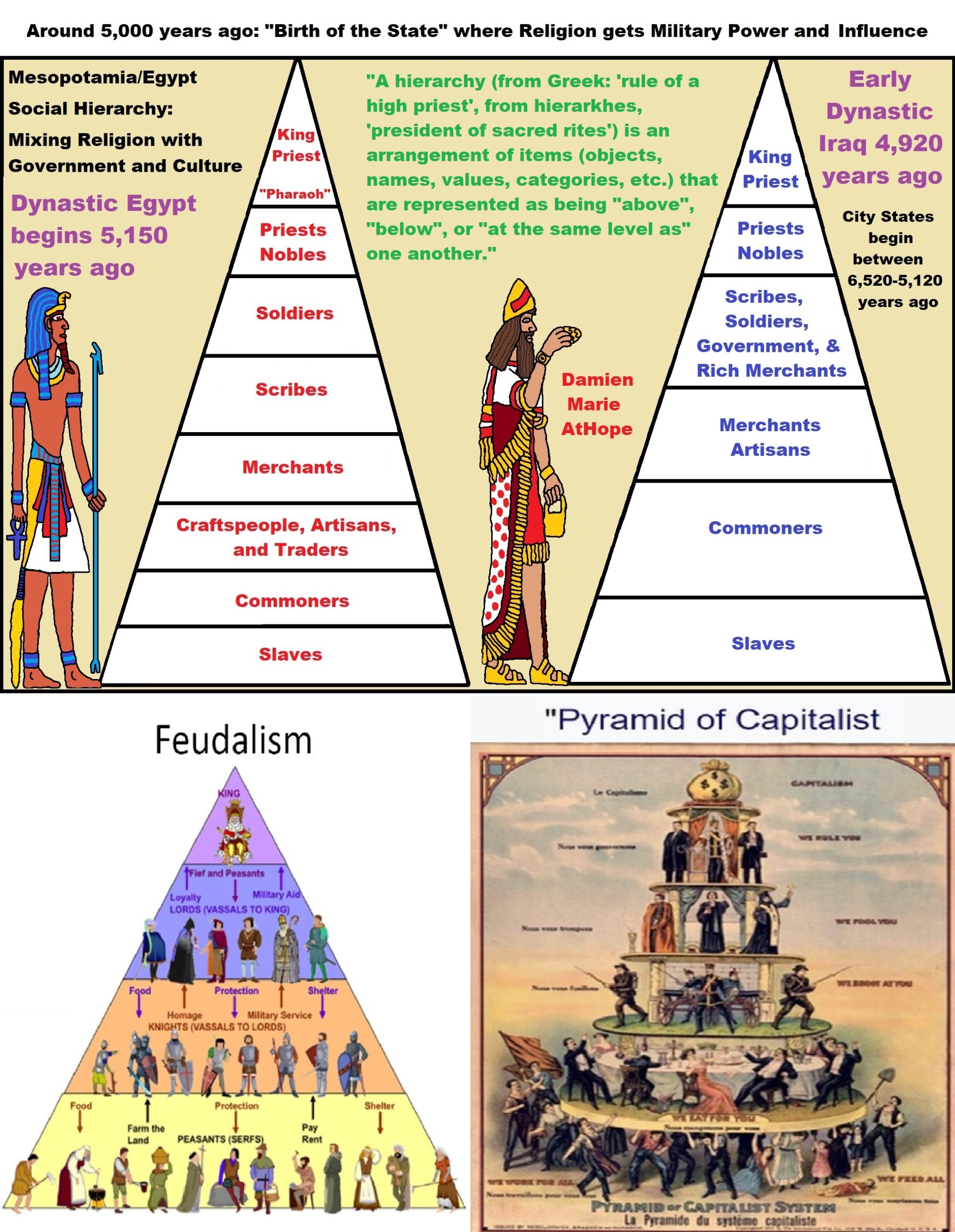
Pyramid of Capitalist System?
“The Pyramid of Capitalist System is a common name of a 1911 American cartoon caricature critical of capitalism, copied from a Russian flyer of c. 1901. The graphic focus is on social stratification by social class and economic inequality. The work has been described as “famous”, “well-known and widely reproduced”. A number of derivative works exist. It was published in the 1911 edition of Industrial Worker (The International Publishing Co., Cleveland, Ohio, U.S.), a newspaper of the Industrial Workers of the World, and attributed to “Nedeljkovich, Brashich, & Kuharich.” ref
“The picture shows a literal “social pyramid” or hierarchy, with the wealthy few on the top, and the impoverished masses at the bottom. Crowned with a money bag representing capitalism, the top layer, “we rule you”, is occupied by the royalty and state leaders. Underneath them are the clergy (“we fool you”), followed by the military (“we shoot at you”), and the bourgeoisie (“we eat for you”). The bottom of the pyramid is held by the workers and the peasants (“we work for all… we feed all”).” ref
“The work is based on older similar pictures. In 1900 the Belgian Labour Party used a picture called “Pyramide à renverser” (“a pyramide that has to be overthrowm) during its electoral campaign. A year later Nicolas Lokhoff‘s 1901 caricature of the Russian Empire hierarchy by the Union of Russian Socialists was published. The original picture showed workers supporting the pyramid on their backs, with the stanza: “The time will come when the people in their fury will straighten their bent backs and bring down the structure with one mighty push of their shoulders.” ref
“Notable differences between the Russian 1900 original and the American 1911 derivative version include the replacement of the Russian Empire’s black eagle with a money bag, the Russian tsar and tsarina with a more generic trio of figures (a monarch and state leaders in suits), two of the three Orthodox clergy with a Catholic cardinal and a Protestant minister, and the Russian Empire army with a more generic group of soldiers; the workers are no longer bent and no revolutionary stanza is present. In both pictures, a fallen child or child worker symbolizes the plight of the workers.” ref
“Another shared element is a red flag raised amongst the workers, symbolizing the emergence of the socialist movement. The basic message of the image is a critique of the capitalist system, depicting a hierarchy of power and wealth. It illustrates a working-class supporting all others, and if it would withdraw their support from the system it could topple the existing social order. This type of criticism of capitalism is attributed to the French socialist Louis Blanc.” ref
“Anti-capitalism is a political ideology and movement encompassing a variety of attitudes and ideas that oppose capitalism. In this sense, anti-capitalists are those who wish to replace capitalism with another type of economic system, usually some form of socialism. Socialism advocates public or direct worker ownership and administration of the means of production and allocation of resources, and a society characterized by equal access to resources for all individuals, with an egalitarian method of compensation. Libertarian socialists believe if freedom is valued, then society must work towards a system in which individuals have the power to decide economic issues along with political issues. Libertarian socialists seek to replace unjustified authority with direct democracy, voluntary federation, and popular autonomy in all aspects of life, including physical communities and economic enterprises.” ref
“Within anarchism there emerged a critique of wage slavery, which refers to a situation perceived as quasi-voluntary slavery, where a person’s livelihood depends on wages, especially when the dependence is total and immediate. It is a negatively connoted term used to draw an analogy between slavery and wage labor by focusing on similarities between owning and renting a person. The term wage slavery has been used to criticize economic exploitation and social stratification, with the former seen primarily as unequal bargaining power between labor and capital (particularly when workers are paid comparatively low wages, e.g. in sweatshops), and the latter as a lack of workers’ self-management, fulfilling job choices and leisure in an economy.” ref

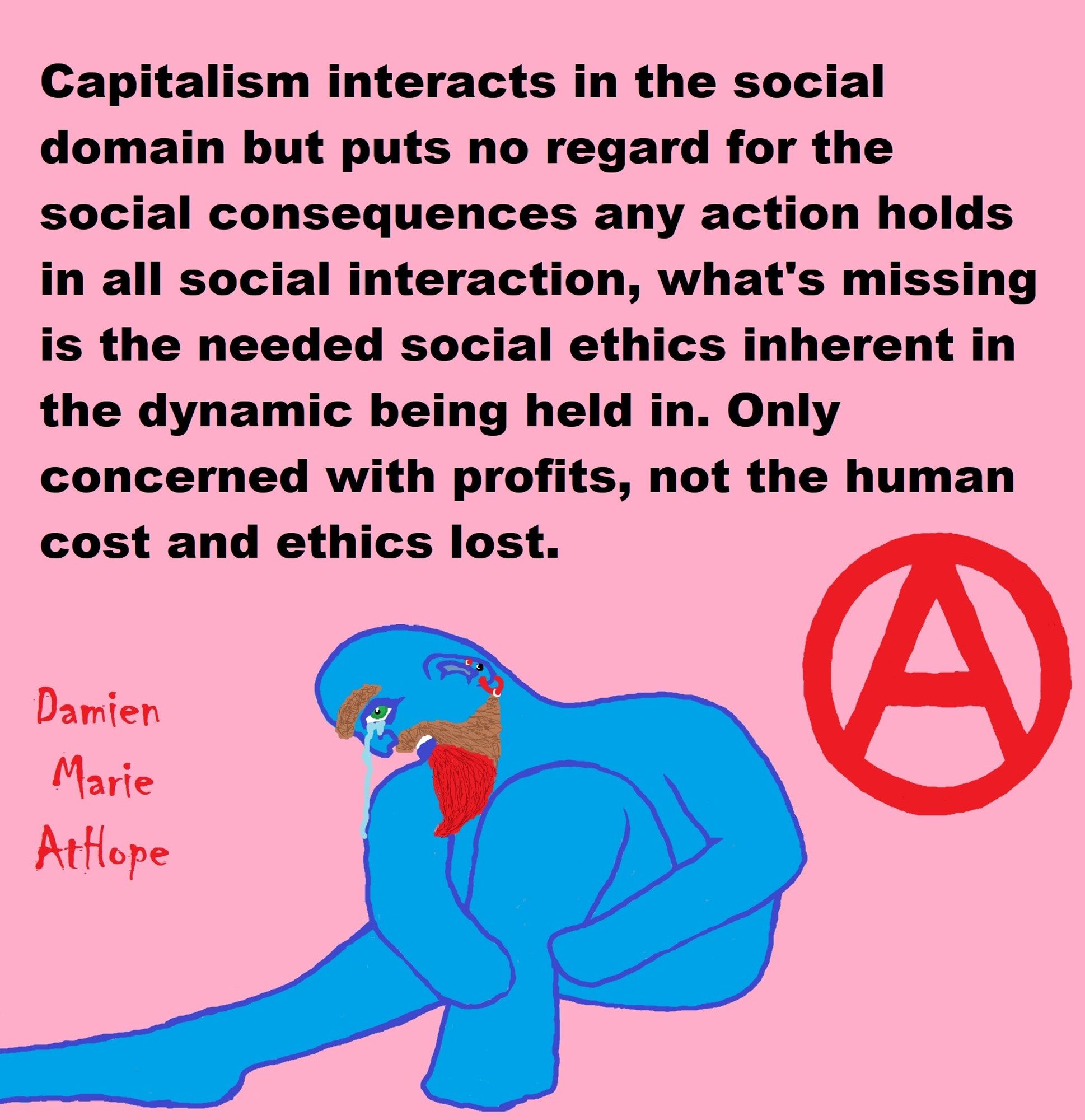
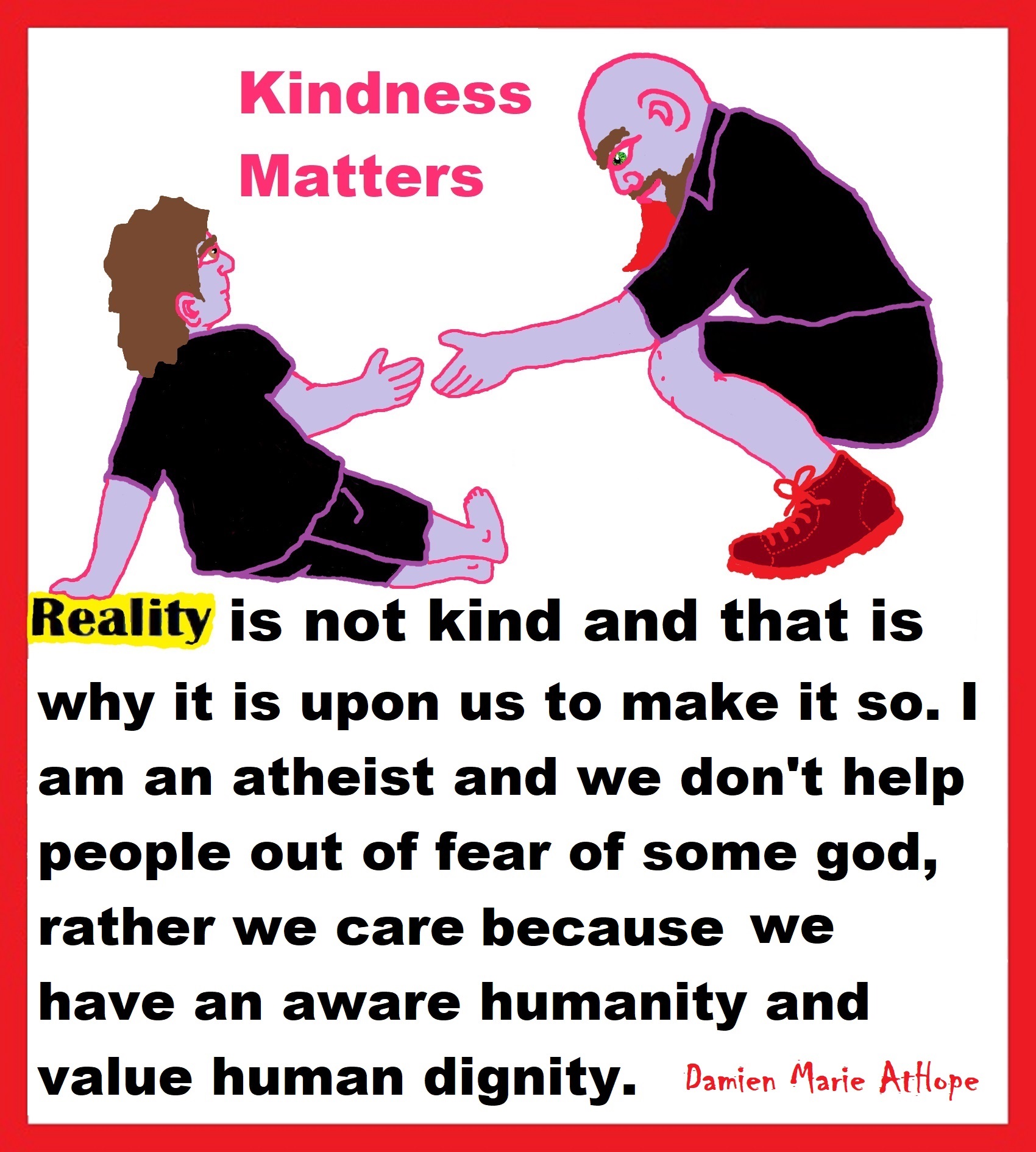

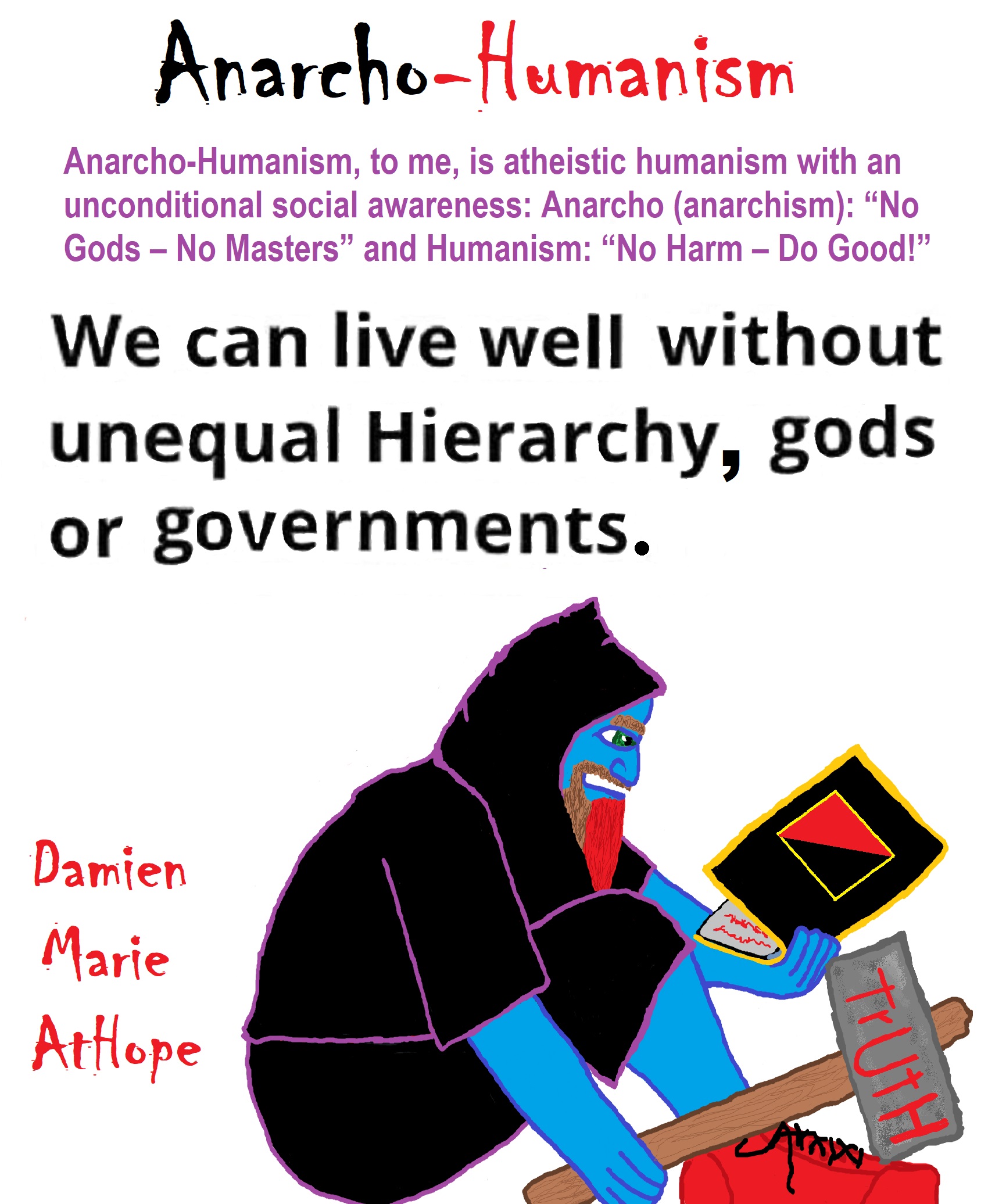
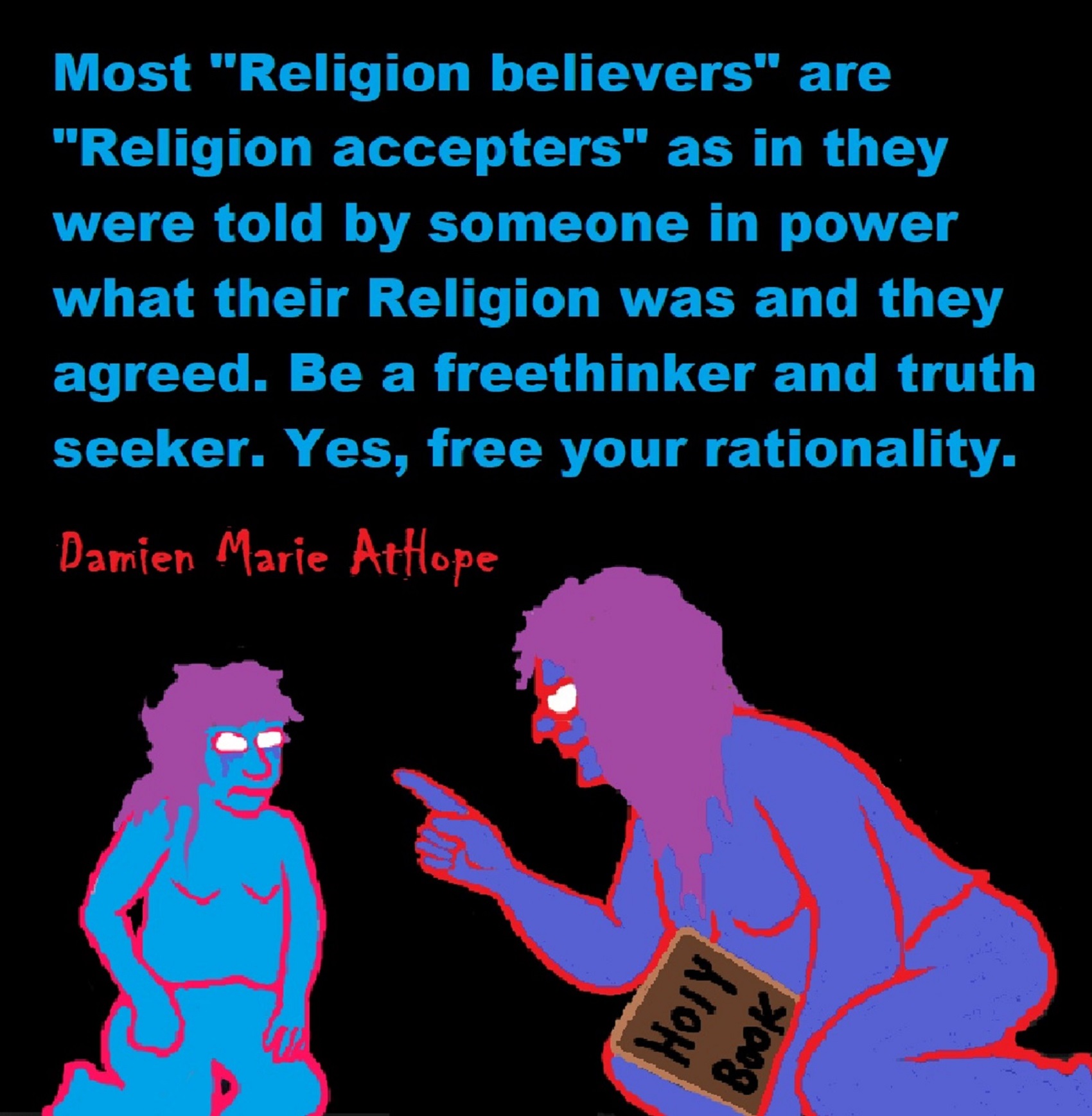
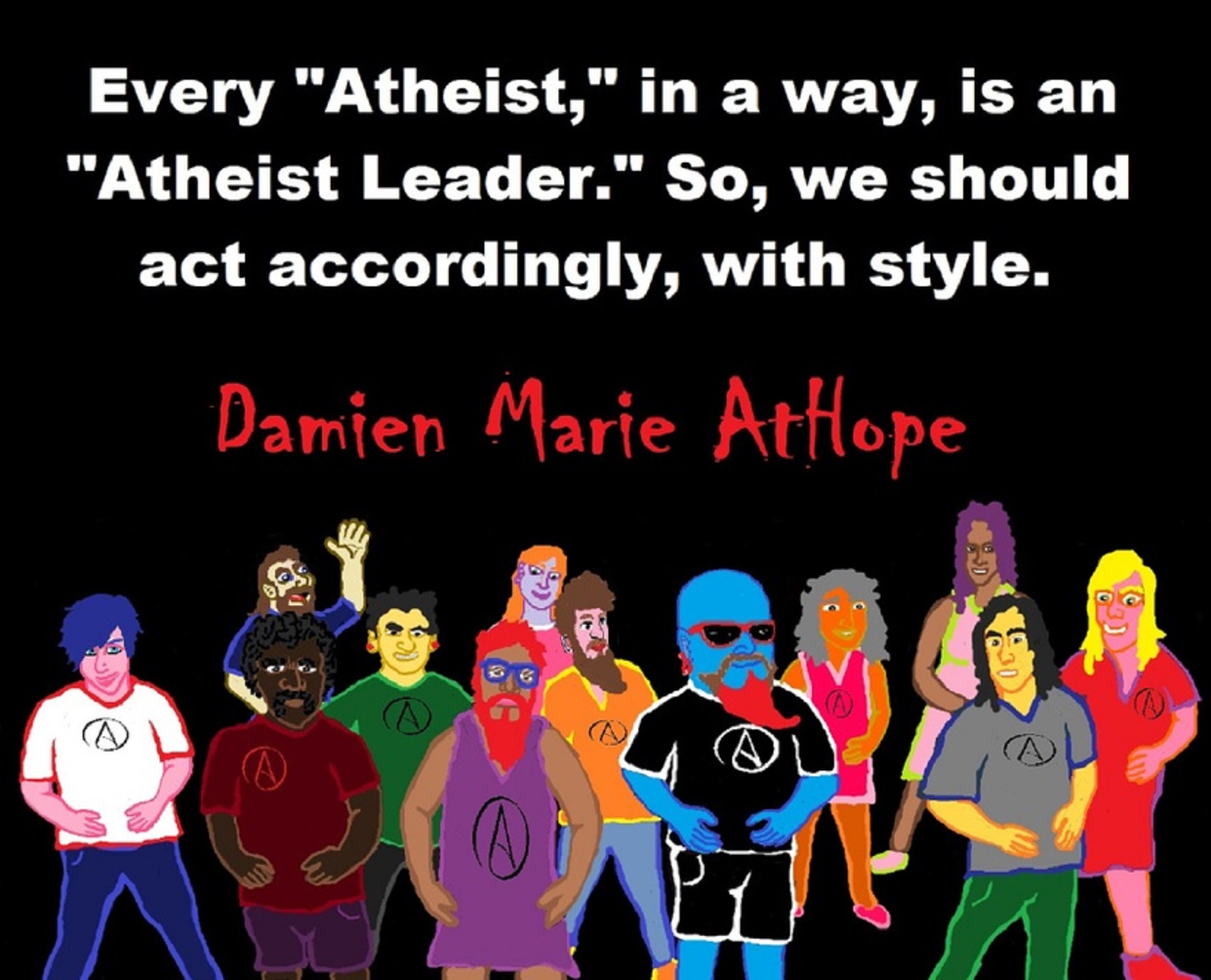

People don’t commonly teach religious history, even that of their own claimed religion. No, rather they teach a limited “pro their religion” history of their religion from a religious perspective favorable to the religion of choice.

Do you truly think “Religious Belief” is only a matter of some personal choice?
Do you not see how coercive one’s world of choice is limited to the obvious hereditary belief, in most religious choices available to the child of religious parents or caregivers? Religion is more commonly like a family, culture, society, etc. available belief that limits the belief choices of the child and that is when “Religious Belief” is not only a matter of some personal choice and when it becomes hereditary faith, not because of the quality of its alleged facts or proposed truths but because everyone else important to the child believes similarly so they do as well simply mimicking authority beliefs handed to them. Because children are raised in religion rather than being presented all possible choices but rather one limited dogmatic brand of “Religious Belief” where children only have a choice of following the belief as instructed, and then personally claim the faith hereditary belief seen in the confirming to the belief they have held themselves all their lives. This is obvious in statements asked and answered by children claiming a faith they barely understand but they do understand that their family believes “this or that” faith, so they feel obligated to believe it too. While I do agree that “Religious Belief” should only be a matter of some personal choice, it rarely is… End Hereditary Religion!

Animism: Respecting the Living World by Graham Harvey
“How have human cultures engaged with and thought about animals, plants, rocks, clouds, and other elements in their natural surroundings? Do animals and other natural objects have a spirit or soul? What is their relationship to humans? In this new study, Graham Harvey explores current and past animistic beliefs and practices of Native Americans, Maori, Aboriginal Australians, and eco-pagans. He considers the varieties of animism found in these cultures as well as their shared desire to live respectfully within larger natural communities. Drawing on his extensive casework, Harvey also considers the linguistic, performative, ecological, and activist implications of these different animisms.” ref

We are like believing machines we vacuum up ideas, like Velcro sticks to almost everything. We accumulate beliefs that we allow to negatively influence our lives, often without realizing it. Our willingness must be to alter skewed beliefs that impend our balance or reason, which allows us to achieve new positive thinking and accurate outcomes.

My thoughts on Religion Evolution with external links for more info:
- (Pre-Animism Africa mainly, but also Europe, and Asia at least 300,000 years ago), (Pre-Animism – Oxford Dictionaries)
- (Animism Africa around 100,000 years ago), (Animism – Britannica.com)
- (Totemism Europe around 50,000 years ago), (Totemism – Anthropology)
- (Shamanism Siberia around 30,000 years ago), (Shamanism – Britannica.com)
- (Paganism Turkey around 12,000 years ago), (Paganism – BBC Religion)
- (Progressed Organized Religion “Institutional Religion” Egypt around 5,000 years ago), (Ancient Egyptian Religion – Britannica.com)
- (CURRENT “World” RELIGIONS after 4,000 years ago) (Origin of Major Religions – Sacred Texts)
- (Early Atheistic Doubting at least by 2,600 years ago) (History of Atheism – Wikipedia)
“Religion is an Evolved Product” and Yes, Religion is Like Fear Given Wings…
Atheists talk about gods and religions for the same reason doctors talk about cancer, they are looking for a cure, or a firefighter talks about fires because they burn people and they care to stop them. We atheists too often feel a need to help the victims of mental slavery, held in the bondage that is the false beliefs of gods and the conspiracy theories of reality found in religions.
Understanding Religion Evolution:
- Pre-Animism (at least 300,000 years ago)
- Animism (Africa: 100,000 years ago)
- Totemism (Europe: 50,000 years ago)
- Shamanism (Siberia: 30,000 years ago)
- Paganism (Turkey: 12,000 years ago)
- Progressed organized religion (Egypt: 5,000 years ago), (Egypt, the First Dynasty 5,150 years ago)
- CURRENT “World” RELIGIONS (after 4,000 years ago)
- Early Atheistic Doubting (at least by 2,600 years ago)
“An Archaeological/Anthropological Understanding of Religion Evolution”
It seems ancient peoples had to survived amazing threats in a “dangerous universe (by superstition perceived as good and evil),” and human “immorality or imperfection of the soul” which was thought to affect the still living, leading to ancestor worship. This ancestor worship presumably led to the belief in supernatural beings, and then some of these were turned into the belief in gods. This feeble myth called gods were just a human conceived “made from nothing into something over and over, changing, again and again, taking on more as they evolve, all the while they are thought to be special,” but it is just supernatural animistic spirit-belief perceived as sacred.
Quick Evolution of Religion?
Pre-Animism (at least 300,000 years ago) pre-religion is a beginning that evolves into later Animism. So, Religion as we think of it, to me, all starts in a general way with Animism (Africa: 100,000 years ago) (theoretical belief in supernatural powers/spirits), then this is physically expressed in or with Totemism (Europe: 50,000 years ago) (theoretical belief in mythical relationship with powers/spirits through a totem item), which then enlists a full-time specific person to do this worship and believed interacting Shamanism (Siberia/Russia: 30,000 years ago) (theoretical belief in access and influence with spirits through ritual), and then there is the further employment of myths and gods added to all the above giving you Paganism (Turkey: 12,000 years ago) (often a lot more nature-based than most current top world religions, thus hinting to their close link to more ancient religious thinking it stems from). My hypothesis is expressed with an explanation of the building of a theatrical house (modern religions development). Progressed organized religion (Egypt: 5,000 years ago) with CURRENT “World” RELIGIONS (after 4,000 years ago).
Historically, in large city-state societies (such as Egypt or Iraq) starting around 5,000 years ago culminated to make religion something kind of new, a sociocultural-governmental-religious monarchy, where all or at least many of the people of such large city-state societies seem familiar with and committed to the existence of “religion” as the integrated life identity package of control dynamics with a fixed closed magical doctrine, but this juggernaut integrated religion identity package of Dogmatic-Propaganda certainly did not exist or if developed to an extent it was highly limited in most smaller prehistoric societies as they seem to lack most of the strong control dynamics with a fixed closed magical doctrine (magical beliefs could be at times be added or removed). Many people just want to see developed religious dynamics everywhere even if it is not. Instead, all that is found is largely fragments until the domestication of religion.
Religions, as we think of them today, are a new fad, even if they go back to around 6,000 years in the timeline of human existence, this amounts to almost nothing when seen in the long slow evolution of religion at least around 70,000 years ago with one of the oldest ritual worship. Stone Snake of South Africa: “first human worship” 70,000 years ago. This message of how religion and gods among them are clearly a man-made thing that was developed slowly as it was invented and then implemented peace by peace discrediting them all. Which seems to be a simple point some are just not grasping how devastating to any claims of truth when we can see the lie clearly in the archeological sites.
I wish people fought as hard for the actual values as they fight for the group/clan names political or otherwise they think support values. Every amount spent on war is theft to children in need of food or the homeless kept from shelter.
Here are several of my blog posts on history:
- To Find Truth You Must First Look
- (Magdalenian/Iberomaurusian) Connections to the First Paganists of the early Neolithic Near East Dating from around 17,000 to 12,000 Years Ago
- Natufians: an Ancient People at the Origins of Agriculture and Sedentary Life
- Possible Clan Leader/Special “MALE” Ancestor Totem Poles At Least 13,500 years ago?
- Jewish People with DNA at least 13,200 years old, Judaism, and the Origins of Some of its Ideas
- Baltic Reindeer Hunters: Swiderian, Lyngby, Ahrensburgian, and Krasnosillya cultures 12,020 to 11,020 years ago are evidence of powerful migratory waves during the last 13,000 years and a genetic link to Saami and the Finno-Ugric peoples.
- The Rise of Inequality: patriarchy and state hierarchy inequality
- Fertile Crescent 12,500 – 9,500 Years Ago: fertility and death cult belief system?
- 12,400 – 11,700 Years Ago – Kortik Tepe (Turkey) Pre/early-Agriculture Cultic Ritualism
- Ritualistic Bird Symbolism at Gobekli Tepe and its “Ancestor Cult”
- Male-Homosexual (female-like) / Trans-woman (female) Seated Figurine from Gobekli Tepe
- Could a 12,000-year-old Bull Geoglyph at Göbekli Tepe relate to older Bull and Female Art 25,000 years ago and Later Goddess and the Bull cults like Catal Huyuk?
- Sedentism and the Creation of goddesses around 12,000 years ago as well as male gods after 7,000 years ago.
- Alcohol, where Agriculture and Religion Become one? Such as Gobekli Tepe’s Ritualistic use of Grain as Food and Ritual Drink
- Neolithic Ritual Sites with T-Pillars and other Cultic Pillars
- Paganism: Goddesses around 12,000 years ago then Male Gods after 7,000 years ago
- First Patriarchy: Split of Women’s Status around 12,000 years ago & First Hierarchy: fall of Women’s Status around 5,000 years ago.
- Natufians: an Ancient People at the Origins of Agriculture and Sedentary Life
- J DNA and the Spread of Agricultural Religion (paganism)
- Paganism: an approximately 12,000-year-old belief system
- Paganism 12,000 years old: related to “Anarchism and Socialism” (Pre-Capitalism)
- Shaman burial in Israel 12,000 years ago and the Shamanism Phenomena
- Need to Mythicized: gods and goddesses
- 12,000 – 7,000 Years Ago – Paleo-Indian Culture (The Americas)
- 12,000 – 2,000 Years Ago – Indigenous-Scandinavians (Nordic)
- Norse did not wear helmets with horns?
- Pre-Pottery Neolithic Skull Cult around 11,500 to 8,400 Years Ago?
- 10,400 – 10,100 Years Ago, in Turkey the Nevail Cori Religious Settlement
- 9,000-6,500 Years Old Submerged Pre-Pottery/Pottery Neolithic Ritual Settlements off Israel’s Coast
- Catal Huyuk “first religious designed city” around 9,500 to 7,700 years ago (Turkey)
- Cultic Hunting at Catal Huyuk “first religious designed city”
- Special Items and Art as well as Special Elite Burials at Catal Huyuk
- New Rituals and Violence with the appearance of Pottery and People?
- Haplogroup N and its related Uralic Languages and Cultures
- Ainu people, Sámi people, Native Americans, the Ancient North Eurasians, and Paganistic-Shamanism with Totemism
- Ideas, Technology and People from Turkey, Europe, to China and Back again 9,000 to 5,000 years ago?
- First Pottery of Europe and the Related Cultures
- 9,000 years old Neolithic Artifacts Judean Desert and Hills Israel
- 9,000-7,000 years-old Sex and Death Rituals: Cult Sites in Israel, Jordan, and the Sinai
- 9,000-8500 year old Horned Female shaman Bad Dürrenberg Germany
- Neolithic Jewelry and the Spread of Farming in Europe Emerging out of West Turkey
- 8,600-year-old Tortoise Shells in Neolithic graves in central China have Early Writing and Shamanism
- Swing of the Mace: the rise of Elite, Forced Authority, and Inequality begin to Emerge 8,500 years ago?
- Migrations and Changing Europeans Beginning around 8,000 Years Ago
- My “Steppe-Anatolian-Kurgan hypothesis” 8,000/7,000 years ago
- Around 8,000-year-old Shared Idea of the Mistress of Animals, “Ritual” Motif
- Pre-Columbian Red-Paint (red ochre) Maritime Archaic Culture 8,000-3,000 years ago
- 7,522-6,522 years ago Linear Pottery culture which I think relates to Arcane Capitalism’s origins
- Arcane Capitalism: Primitive socialism, Primitive capital, Private ownership, Means of production, Market capitalism, Class discrimination, and Petite bourgeoisie (smaller capitalists)
- 7,500-4,750 years old Ritualistic Cucuteni-Trypillian culture of Moldova, Romania, and Ukraine
- Roots of a changing early society 7,200-6,700 years ago Jordan and Israel
- Agriculture religion (Paganism) with farming reached Britain between about 7,000 to 6,500 or so years ago and seemingly expressed in things like Western Europe’s Long Barrows
- My Thoughts on Possible Migrations of “R” DNA and Proto-Indo-European?
- “Millet” Spreading from China 7,022 years ago to Europe and related Language may have Spread with it leading to Proto-Indo-European
- Proto-Indo-European (PIE), ancestor of Indo-European languages: DNA, Society, Language, and Mythology
- The Dnieper–Donets culture and Asian varieties of Millet from China to the Black Sea region of Europe by 7,022 years ago
- Kurgan 6,000 years ago/dolmens 7,000 years ago: funeral, ritual, and other?
- 7,020 to 6,020-year-old Proto-Indo-European Homeland of Urheimat or proposed home of their Language and Religion
- Ancient Megaliths: Kurgan, Ziggurat, Pyramid, Menhir, Trilithon, Dolman, Kromlech, and Kromlech of Trilithons
- The Mytheme of Ancient North Eurasian Sacred-Dog belief and similar motifs are found in Indo-European, Native American, and Siberian comparative mythology
- Elite Power Accumulation: Ancient Trade, Tokens, Writing, Wealth, Merchants, and Priest-Kings
- Sacred Mounds, Mountains, Kurgans, and Pyramids may hold deep connections?
- Between 7,000-5,000 Years ago, rise of unequal hierarchy elite, leading to a “birth of the State” or worship of power, strong new sexism, oppression of non-elites, and the fall of Women’s equal status
- Paganism 7,000-5,000 years old: related to “Anarchism and Socialism” (Capitalism) (World War 0) Elite & their slaves
- Hell and Underworld mythologies starting maybe as far back as 7,000 to 5,000 years ago with the Proto-Indo-Europeans?
- The First Expression of the Male God around 7,000 years ago?
- White (light complexion skin) Bigotry and Sexism started 7,000 years ago?
- Around 7,000-year-old Shared Idea of the Divine Bird (Tutelary and/or Trickster spirit/deity), “Ritual” Motif
- Nekhbet an Ancient Egyptian Vulture Goddess and Tutelary Deity
- 6,720 to 4,920 years old Ritualistic Hongshan Culture of Inner Mongolia with 5,000-year-old Pyramid Mounds and Temples
- First proto-king in the Balkans, Varna culture around 6,500 years ago?
- 6,500–5,800 years ago in Israel Late Chalcolithic (Copper Age) Period in the Southern Levant Seems to Express Northern Levant Migrations, Cultural and Religious Transfer
- KING OF BEASTS: Master of Animals “Ritual” Motif, around 6,000 years old or older…
- Around 6000-year-old Shared Idea of the Solid Wheel & the Spoked Wheel-Shaped Ritual Motif
- “The Ghassulian Star,” a mysterious 6,000-year-old mural from Jordan; a Proto-Star of Ishtar, Star of Inanna or Star of Venus?
- Religious/Ritual Ideas, including goddesses and gods as well as ritual mounds or pyramids from Northeastern Asia at least 6,000 years old, seemingly filtering to Iran, Iraq, the Mediterranean, Europe, Egypt, and the Americas?
- Maykop (5,720–5,020 years ago) Caucasus region Bronze Age culture-related to Copper Age farmers from the south, influenced by the Ubaid period and Leyla-Tepe culture, as well as influencing the Kura-Araxes culture
- 5-600-year-old Tomb, Mummy, and First Bearded Male Figurine in a Grave
- Kura-Araxes Cultural 5,520 to 4,470 years old DNA traces to the Canaanites, Arabs, and Jews
- Minoan/Cretan (Keftiu) Civilization and Religion around 5,520 to 3,120 years ago
- Evolution Of Science at least by 5,500 years ago
- 5,500 Years old birth of the State, the rise of Hierarchy, and the fall of Women’s status
- “Jiroft culture” 5,100 – 4,200 years ago and the History of Iran
- Stonehenge: Paganistic Burial and Astrological Ritual Complex, England (5,100-3,600 years ago)
- Around 5,000-year-old Shared Idea of the “Tree of Life” Ritual Motif
- Complex rituals for elite, seen from China to Egypt, at least by 5,000 years ago
- Around 5,000 years ago: “Birth of the State” where Religion gets Military Power and Influence
- The Center of the World “Axis Mundi” and/or “Sacred Mountains” Mythology Could Relate to the Altai Mountains, Heart of the Steppe
- Progressed organized religion starts, an approximately 5,000-year-old belief system
- China’s Civilization between 5,000-3,000 years ago, was a time of war and class struggle, violent transition from free clans to a Slave or Elite society
- Origin of Logics is Naturalistic Observation at least by around 5,000 years ago.
- Paganism 5,000 years old: progressed organized religion and the state: related to “Anarchism and Socialism” (Kings and the Rise of the State)
- Ziggurats (multi-platform temples: 4,900 years old) to Pyramids (multi-platform tombs: 4,700 years old)
- Did a 4,520–4,420-year-old Volcano In Turkey Inspire the Bible God?
- Finland’s Horned Shaman and Pre-Horned-God at least 4,500 years ago?
- 4,000-year-Old Dolmens in Israel: A Connected Dolmen Religious Phenomenon?
- Creation myths: From chaos, Ex nihilo, Earth-diver, Emergence, World egg, and World parent
- Bronze Age “Ritual” connections of the Bell Beaker culture with the Corded Ware/Single Grave culture, which were related to the Yamnaya culture and Proto-Indo-European Languages/Religions
- Low Gods (Earth/ Tutelary deity), High Gods (Sky/Supreme deity), and Moralistic Gods (Deity enforcement/divine order)
- The exchange of people, ideas, and material-culture including, to me, the new god (Sky Father) and goddess (Earth Mother) religion between the Cucuteni-Trypillians and others which is then spread far and wide
- Koryaks: Indigenous People of the Russian Far East and Big Raven myths also found in Tlingit, Haida, Tsimshian, and other Indigenous People of North America
- 42 Principles Of Maat (Egyptian Goddess of the justice) around 4,400 years ago, 2000 Years Before Ten Commandments
- “Happy Easter” Well Happy Eostre/Ishter
- 4,320-3,820 years old “Shimao” (North China) site with Totemistic-Shamanistic Paganism and a Stepped Pyramid
- 4,250 to 3,400 Year old Stonehenge from Russia: Arkaim?
- 4,100-year-old beaker with medicinal & flowering plants in a grave of a woman in Scotland
- Early European Farmer ancestry, Kelif el Boroud people with the Cardial Ware culture, and the Bell Beaker culture Paganists too, spread into North Africa, then to the Canary Islands off West Africa
- Flood Accounts: Gilgamesh epic (4,100 years ago) Noah in Genesis (2,600 years ago)
- Paganism 4,000 years old: related to “Anarchism and Socialism” (First Moralistic gods, then the Origin time of Monotheism)
- When was the beginning: TIMELINE OF CURRENT RELIGIONS, which start around 4,000 years ago.
- Early Religions Thought to Express Proto-Monotheistic Systems around 4,000 years ago
- Kultepe? An archaeological site with a 4,000 years old women’s rights document.
- Single God Religions (Monotheism) = “Man-o-theism” started around 4,000 years ago with the Great Sky Spirit/God Tiān (天)?
- Confucianism’s Tiān (Shangdi god 4,000 years old): Supernaturalism, Pantheism or Theism?
- Yes, Your Male God is Ridiculous
- Mythology, a Lunar Deity is a Goddess or God of the Moon
- Sacred Land, Hills, and Mountains: Sami Mythology (Paganistic Shamanism)
- Horse Worship/Sacrifice: mythical union of Ruling Elite/Kingship and the Horse
- The Amorite/Amurru people’s God Amurru “Lord of the Steppe”, relates to the Origins of the Bible God?
- Bronze Age Exotic Trade Routes Spread Quite Far as well as Spread Religious Ideas with Them
- Sami and the Northern Indigenous Peoples Landscape, Language, and its Connection to Religion
- Prototype of Ancient Analemmatic Sundials around 3,900-3,150 years ago and a Possible Solar Connection to gods?
- Judaism is around 3,450 or 3,250 years old. (“Paleo-Hebrew” 3,000 years ago and Torah 2,500 years ago)
- The Weakening of Ancient Trade and the Strengthening of Religions around 3000 years ago?
- Are you aware that there are religions that worship women gods, explain now religion tears women down?
- Animistic, Totemistic, and Paganistic Superstition Origins of bible god and the bible’s Religion.
- Myths and Folklore: “Trickster gods and goddesses”
- Jews, Judaism, and the Origins of Some of its Ideas
- An Old Branch of Religion Still Giving Fruit: Sacred Trees
- Dating the BIBLE: naming names and telling times (written less than 3,000 years ago, provable to 2,200 years ago)
- Did a Volcano Inspire the bible god?
- Dené–Yeniseian language, Old Copper Complex, and Pre-Columbian Mound Builders?
- No “dinosaurs and humans didn’t exist together just because some think they are in the bible itself”
- Sacred Shit and Sacred Animals?
- Everyone Killed in the Bible Flood? “Nephilim” (giants)?
- Hey, Damien dude, I have a question for you regarding “the bible” Exodus.
- Archaeology Disproves the Bible
- Bible Battle, Just More, Bible Babble
- The Jericho Conquest lie?
- Canaanites and Israelites?
- Accurate Account on how did Christianity Began?
- Let’s talk about Christianity.
- So the 10 commandments isn’t anything to go by either right?
- Misinformed christian
- Debunking Jesus?
- Paulism vs Jesus
- Ok, you seem confused so let’s talk about Buddhism.
- Unacknowledged Buddhism: Gods, Savior, Demons, Rebirth, Heavens, Hells, and Terrorism
- His Foolishness The Dalai Lama
- Yin and Yang is sexist with an ORIGIN around 2,300 years ago?
- I Believe Archaeology, not Myths & Why Not, as the Religious Myths Already Violate Reason!
- Archaeological, Scientific, & Philosophic evidence shows the god myth is man-made nonsense.
- Aquatic Ape Theory/Hypothesis? As Always, Just Pseudoscience.
- Ancient Aliens Conspiracy Theorists are Pseudohistorians
- The Pseudohistoric and Pseudoscientific claims about “Bakoni Ruins” of South Africa
- Why do people think Religion is much more than supernaturalism and superstitionism?
- Religion is an Evolved Product
- Was the Value of Ancient Women Different?
- 1000 to 1100 CE, human sacrifice Cahokia Mounds a pre-Columbian Native American site
- Feminist atheists as far back as the 1800s?
- Promoting Religion as Real is Mentally Harmful to a Flourishing Humanity
- Screw All Religions and Their Toxic lies, they are all fraud
- Forget Religions’ Unfounded Myths, I Have Substantiated “Archaeology Facts.”
- Religion Dispersal throughout the World
- I Hate Religion Just as I Hate all Pseudoscience
- Exposing Scientology, Eckankar, Wicca and Other Nonsense?
- Main deity or religious belief systems
- Quit Trying to Invent Your God From the Scraps of Science.
- Archaeological, Scientific, & Philosophic evidence shows the god myth is man-made nonsense.
- Ancient Alien Conspiracy Theorists: Misunderstanding, Rhetoric, Misinformation, Fabrications, and Lies
- Misinformation, Distortion, and Pseudoscience in Talking with a Christian Creationist
- Judging the Lack of Goodness in Gods, Even the Norse God Odin
- Challenging the Belief in God-like Aliens and Gods in General
- A Challenge to Christian use of Torture Devices?
- Yes, Hinduism is a Religion
- Trump is One of the Most Reactionary Forces of Far-right Christian Extremism
- Was the Bull Head a Symbol of God? Yes!
- Primate Death Rituals
- Christian – “God and Christianity are objectively true”
- Australopithecus afarensis Death Ritual?
- You Claim Global Warming is a Hoax?
- Doubter of Science and Defamer of Atheists?
- I think that sounds like the Bible?
- History of the Antifa (“anti-fascist”) Movements
- Indianapolis Anti-Blasphemy Laws #Free Soheil Rally
- Damien, you repeat the golden rule in so many forms then you say religion is dogmatic?
- Science is a Trustable Methodology whereas Faith is not Trustable at all!
- Was I ever a believer, before I was an atheist?
- Atheists rise in reason
- Mistrust of science?
- Open to Talking About the Definition of ‘God’? But first, we address Faith.
- ‘United Monarchy’ full of splendor and power – Saul, David, and Solomon? Most likely not.
- Is there EXODUS ARCHAEOLOGY? The short answer is “no.”
- Lacking Proof of Bigfoots, Unicorns, and Gods is Just a Lack of Research?
- Religion and Politics: Faith Beliefs vs. Rational Thinking
- Hammer of Truth that lying pig RELIGION: challenged by an archaeologist
- “The Hammer of Truth” -ontology question- What do You Mean by That?
- Navigation of a bad argument: Ad Hominem vs. Attack
- Why is it Often Claimed that Gods have a Gender?
- Why are basically all monotheistic religions ones that have a male god?
- Shifting through the Claims in support of Faith
- Dear Mr. AtHope, The 20th Century is an Indictment of Secularism and a Failed Atheist Century
- An Understanding of the Worldwide Statistics and Dynamics of Terrorist Incidents and Suicide Attacks
- Intoxication and Evolution? Addressing and Assessing the “Stoned Ape” or “Drunken Monkey” Theories as Catalysts in Human Evolution
- Sacred Menstrual cloth? Inanna’s knot, Isis knot, and maybe Ma’at’s feather?
- Damien, why don’t the Hebrews accept the bible stories?
- Dealing with a Troll and Arguing Over Word Meaning
- Knowledge without Belief? Justified beliefs or disbeliefs worthy of Knowledge?
- Afrocentrism and African Religions
- Crecganford @crecganford offers history & stories of the people, places, gods, & culture
- Empiricism-Denier?
I am not an academic. I am a revolutionary that teaches in public, in places like social media, and in the streets. I am not a leader by some title given but from my commanding leadership style of simply to start teaching everywhere to everyone, all manner of positive education.









ref, ref, ref, ref, ref, ref, ref, ref, ref, ref, ref, ref, ref, ref, ref, ref, ref, ref, ref, ref, ref
Low Gods “Earth” or Tutelary deity and High Gods “Sky” or Supreme deity
“An Earth goddess is a deification of the Earth. Earth goddesses are often associated with the “chthonic” deities of the underworld. Ki and Ninhursag are Mesopotamian earth goddesses. In Greek mythology, the Earth is personified as Gaia, corresponding to Roman Terra, Indic Prithvi/Bhūmi, etc. traced to an “Earth Mother” complementary to the “Sky Father” in Proto-Indo-European religion. Egyptian mythology exceptionally has a sky goddess and an Earth god.” ref
“A mother goddess is a goddess who represents or is a personification of nature, motherhood, fertility, creation, destruction or who embodies the bounty of the Earth. When equated with the Earth or the natural world, such goddesses are sometimes referred to as Mother Earth or as the Earth Mother. In some religious traditions or movements, Heavenly Mother (also referred to as Mother in Heaven or Sky Mother) is the wife or feminine counterpart of the Sky father or God the Father.” ref
“Any masculine sky god is often also king of the gods, taking the position of patriarch within a pantheon. Such king gods are collectively categorized as “sky father” deities, with a polarity between sky and earth often being expressed by pairing a “sky father” god with an “earth mother” goddess (pairings of a sky mother with an earth father are less frequent). A main sky goddess is often the queen of the gods and may be an air/sky goddess in her own right, though she usually has other functions as well with “sky” not being her main. In antiquity, several sky goddesses in ancient Egypt, Mesopotamia, and the Near East were called Queen of Heaven. Neopagans often apply it with impunity to sky goddesses from other regions who were never associated with the term historically. The sky often has important religious significance. Many religions, both polytheistic and monotheistic, have deities associated with the sky.” ref
“In comparative mythology, sky father is a term for a recurring concept in polytheistic religions of a sky god who is addressed as a “father”, often the father of a pantheon and is often either a reigning or former King of the Gods. The concept of “sky father” may also be taken to include Sun gods with similar characteristics, such as Ra. The concept is complementary to an “earth mother“. “Sky Father” is a direct translation of the Vedic Dyaus Pita, etymologically descended from the same Proto-Indo-European deity name as the Greek Zeûs Pater and Roman Jupiter and Germanic Týr, Tir or Tiwaz, all of which are reflexes of the same Proto-Indo-European deity’s name, *Dyēus Ph₂tḗr. While there are numerous parallels adduced from outside of Indo-European mythology, there are exceptions (e.g. In Egyptian mythology, Nut is the sky mother and Geb is the earth father).” ref
Tutelary deity
“A tutelary (also tutelar) is a deity or spirit who is a guardian, patron, or protector of a particular place, geographic feature, person, lineage, nation, culture, or occupation. The etymology of “tutelary” expresses the concept of safety and thus of guardianship. In late Greek and Roman religion, one type of tutelary deity, the genius, functions as the personal deity or daimon of an individual from birth to death. Another form of personal tutelary spirit is the familiar spirit of European folklore.” ref
“A tutelary (also tutelar) in Korean shamanism, jangseung and sotdae were placed at the edge of villages to frighten off demons. They were also worshiped as deities. Seonangshin is the patron deity of the village in Korean tradition and was believed to embody the Seonangdang. In Philippine animism, Diwata or Lambana are deities or spirits that inhabit sacred places like mountains and mounds and serve as guardians. Such as: Maria Makiling is the deity who guards Mt. Makiling and Maria Cacao and Maria Sinukuan. In Shinto, the spirits, or kami, which give life to human bodies come from nature and return to it after death. Ancestors are therefore themselves tutelaries to be worshiped. And similarly, Native American beliefs such as Tonás, tutelary animal spirit among the Zapotec and Totems, familial or clan spirits among the Ojibwe, can be animals.” ref
“A tutelary (also tutelar) in Austronesian beliefs such as: Atua (gods and spirits of the Polynesian peoples such as the Māori or the Hawaiians), Hanitu (Bunun of Taiwan‘s term for spirit), Hyang (Kawi, Sundanese, Javanese, and Balinese Supreme Being, in ancient Java and Bali mythology and this spiritual entity, can be either divine or ancestral), Kaitiaki (New Zealand Māori term used for the concept of guardianship, for the sky, the sea, and the land), Kawas (mythology) (divided into 6 groups: gods, ancestors, souls of the living, spirits of living things, spirits of lifeless objects, and ghosts), Tiki (Māori mythology, Tiki is the first man created by either Tūmatauenga or Tāne and represents deified ancestors found in most Polynesian cultures). ” ref, ref, ref, ref, ref, ref, ref
Mesopotamian Tutelary Deities can be seen as ones related to City-States
“Historical city-states included Sumerian cities such as Uruk and Ur; Ancient Egyptian city-states, such as Thebes and Memphis; the Phoenician cities (such as Tyre and Sidon); the five Philistine city-states; the Berber city-states of the Garamantes; the city-states of ancient Greece (the poleis such as Athens, Sparta, Thebes, and Corinth); the Roman Republic (which grew from a city-state into a vast empire); the Italian city-states from the Middle Ages to the early modern period, such as Florence, Siena, Ferrara, Milan (which as they grew in power began to dominate neighboring cities) and Genoa and Venice, which became powerful thalassocracies; the Mayan and other cultures of pre-Columbian Mesoamerica (including cities such as Chichen Itza, Tikal, Copán and Monte Albán); the central Asian cities along the Silk Road; the city-states of the Swahili coast; Ragusa; states of the medieval Russian lands such as Novgorod and Pskov; and many others.” ref
“The Uruk period (ca. 4000 to 3100 BCE; also known as Protoliterate period) of Mesopotamia, named after the Sumerian city of Uruk, this period saw the emergence of urban life in Mesopotamia and the Sumerian civilization. City-States like Uruk and others had a patron tutelary City Deity along with a Priest-King.” ref
“Chinese folk religion, both past, and present, includes myriad tutelary deities. Exceptional individuals, highly cultivated sages, and prominent ancestors can be deified and honored after death. Lord Guan is the patron of military personnel and police, while Mazu is the patron of fishermen and sailors. Such as Tu Di Gong (Earth Deity) is the tutelary deity of a locality, and each individual locality has its own Earth Deity and Cheng Huang Gong (City God) is the guardian deity of an individual city, worshipped by local officials and locals since imperial times.” ref
“A tutelary (also tutelar) in Hinduism, personal tutelary deities are known as ishta-devata, while family tutelary deities are known as Kuladevata. Gramadevata are guardian deities of villages. Devas can also be seen as tutelary. Shiva is the patron of yogis and renunciants. City goddesses include: Mumbadevi (Mumbai), Sachchika (Osian); Kuladevis include: Ambika (Porwad), and Mahalakshmi. In NorthEast India Meitei mythology and religion (Sanamahism) of Manipur, there are various types of tutelary deities, among which Lam Lais are the most predominant ones. Tibetan Buddhism has Yidam as a tutelary deity. Dakini is the patron of those who seek knowledge.” ref
“A tutelary (also tutelar) The Greeks also thought deities guarded specific places: for instance, Athena was the patron goddess of the city of Athens. Socrates spoke of hearing the voice of his personal spirit or daimonion:
You have often heard me speak of an oracle or sign which comes to me … . This sign I have had ever since I was a child. The sign is a voice which comes to me and always forbids me to do something which I am going to do, but never commands me to do anything, and this is what stands in the way of my being a politician.” ref
“Tutelary deities who guard and preserve a place or a person are fundamental to ancient Roman religion. The tutelary deity of a man was his Genius, that of a woman her Juno. In the Imperial era, the Genius of the Emperor was a focus of Imperial cult. An emperor might also adopt a major deity as his personal patron or tutelary, as Augustus did Apollo. Precedents for claiming the personal protection of a deity were established in the Republican era, when for instance the Roman dictator Sulla advertised the goddess Victory as his tutelary by holding public games (ludi) in her honor.” ref
“Each town or city had one or more tutelary deities, whose protection was considered particularly vital in time of war and siege. Rome itself was protected by a goddess whose name was to be kept ritually secret on pain of death (for a supposed case, see Quintus Valerius Soranus). The Capitoline Triad of Juno, Jupiter, and Minerva were also tutelaries of Rome. The Italic towns had their own tutelary deities. Juno often had this function, as at the Latin town of Lanuvium and the Etruscan city of Veii, and was often housed in an especially grand temple on the arx (citadel) or other prominent or central location. The tutelary deity of Praeneste was Fortuna, whose oracle was renowned.” ref
“The Roman ritual of evocatio was premised on the belief that a town could be made vulnerable to military defeat if the power of its tutelary deity were diverted outside the city, perhaps by the offer of superior cult at Rome. The depiction of some goddesses such as the Magna Mater (Great Mother, or Cybele) as “tower-crowned” represents their capacity to preserve the city. A town in the provinces might adopt a deity from within the Roman religious sphere to serve as its guardian, or syncretize its own tutelary with such; for instance, a community within the civitas of the Remi in Gaul adopted Apollo as its tutelary, and at the capital of the Remi (present-day Rheims), the tutelary was Mars Camulus.” ref
Household deity (a kind of or related to a Tutelary deity)
“A household deity is a deity or spirit that protects the home, looking after the entire household or certain key members. It has been a common belief in paganism as well as in folklore across many parts of the world. Household deities fit into two types; firstly, a specific deity – typically a goddess – often referred to as a hearth goddess or domestic goddess who is associated with the home and hearth, such as the ancient Greek Hestia.” ref
“The second type of household deities are those that are not one singular deity, but a type, or species of animistic deity, who usually have lesser powers than major deities. This type was common in the religions of antiquity, such as the Lares of ancient Roman religion, the Gashin of Korean shamanism, and Cofgodas of Anglo-Saxon paganism. These survived Christianisation as fairy-like creatures existing in folklore, such as the Anglo-Scottish Brownie and Slavic Domovoy.” ref
“Household deities were usually worshipped not in temples but in the home, where they would be represented by small idols (such as the teraphim of the Bible, often translated as “household gods” in Genesis 31:19 for example), amulets, paintings, or reliefs. They could also be found on domestic objects, such as cosmetic articles in the case of Tawaret. The more prosperous houses might have a small shrine to the household god(s); the lararium served this purpose in the case of the Romans. The gods would be treated as members of the family and invited to join in meals, or be given offerings of food and drink.” ref
“In many religions, both ancient and modern, a god would preside over the home. Certain species, or types, of household deities, existed. An example of this was the Roman Lares. Many European cultures retained house spirits into the modern period. Some examples of these include:
- Brownie (Scotland and England) or Hob (England) / Kobold (Germany) / Goblin / Hobgoblin
- Domovoy (Slavic)
- Nisse (Norwegian or Danish) / Tomte (Swedish) / Tonttu (Finnish)
- Húsvættir (Norse)” ref
“Although the cosmic status of household deities was not as lofty as that of the Twelve Olympians or the Aesir, they were also jealous of their dignity and also had to be appeased with shrines and offerings, however humble. Because of their immediacy they had arguably more influence on the day-to-day affairs of men than the remote gods did. Vestiges of their worship persisted long after Christianity and other major religions extirpated nearly every trace of the major pagan pantheons. Elements of the practice can be seen even today, with Christian accretions, where statues to various saints (such as St. Francis) protect gardens and grottos. Even the gargoyles found on older churches, could be viewed as guardians partitioning a sacred space.” ref
“For centuries, Christianity fought a mop-up war against these lingering minor pagan deities, but they proved tenacious. For example, Martin Luther‘s Tischreden have numerous – quite serious – references to dealing with kobolds. Eventually, rationalism and the Industrial Revolution threatened to erase most of these minor deities, until the advent of romantic nationalism rehabilitated them and embellished them into objects of literary curiosity in the 19th century. Since the 20th century this literature has been mined for characters for role-playing games, video games, and other fantasy personae, not infrequently invested with invented traits and hierarchies somewhat different from their mythological and folkloric roots.” ref
“In contradistinction to both Herbert Spencer and Edward Burnett Tylor, who defended theories of animistic origins of ancestor worship, Émile Durkheim saw its origin in totemism. In reality, this distinction is somewhat academic, since totemism may be regarded as a particularized manifestation of animism, and something of a synthesis of the two positions was attempted by Sigmund Freud. In Freud’s Totem and Taboo, both totem and taboo are outward expressions or manifestations of the same psychological tendency, a concept which is complementary to, or which rather reconciles, the apparent conflict. Freud preferred to emphasize the psychoanalytic implications of the reification of metaphysical forces, but with particular emphasis on its familial nature. This emphasis underscores, rather than weakens, the ancestral component.” ref
“William Edward Hearn, a noted classicist, and jurist, traced the origin of domestic deities from the earliest stages as an expression of animism, a belief system thought to have existed also in the neolithic, and the forerunner of Indo-European religion. In his analysis of the Indo-European household, in Chapter II “The House Spirit”, Section 1, he states:
The belief which guided the conduct of our forefathers was … the spirit rule of dead ancestors.” ref
“In Section 2 he proceeds to elaborate:
It is thus certain that the worship of deceased ancestors is a vera causa, and not a mere hypothesis. …
In the other European nations, the Slavs, the Teutons, and the Kelts, the House Spirit appears with no less distinctness. … [T]he existence of that worship does not admit of doubt. … The House Spirits had a multitude of other names which it is needless here to enumerate, but all of which are more or less expressive of their friendly relations with man. … In [England] … [h]e is the Brownie. … In Scotland this same Brownie is well known. He is usually described as attached to particular families, with whom he has been known to reside for centuries, threshing the corn, cleaning the house, and performing similar household tasks. His favorite gratification was milk and honey.” ref

ref, ref, ref, ref, ref, ref, ref, ref, ref, ref, ref, ref, ref, ref, ref, ref, ref
“These ideas are my speculations from the evidence.”
I am still researching the “god‘s origins” all over the world. So you know, it is very complicated but I am smart and willing to look, DEEP, if necessary, which going very deep does seem to be needed here, when trying to actually understand the evolution of gods and goddesses. I am sure of a few things and less sure of others, but even in stuff I am not fully grasping I still am slowly figuring it out, to explain it to others. But as I research more I am understanding things a little better, though I am still working on understanding it all or something close and thus always figuring out more.
Sky Father/Sky God?
“Egyptian: (Nut) Sky Mother and (Geb) Earth Father” (Egypt is different but similar)
Turkic/Mongolic: (Tengri/Tenger Etseg) Sky Father and (Eje/Gazar Eej) Earth Mother *Transeurasian*
Hawaiian: (Wākea) Sky Father and (Papahānaumoku) Earth Mother *Austronesian*
New Zealand/ Māori: (Ranginui) Sky Father and (Papatūānuku) Earth Mother *Austronesian*
Proto-Indo-European: (Dyḗus/Dyḗus ph₂tḗr) Sky Father and (Dʰéǵʰōm/Pleth₂wih₁) Earth Mother
Indo-Aryan: (Dyaus Pita) Sky Father and (Prithvi Mata) Earth Mother *Indo-European*
Italic: (Jupiter) Sky Father and (Juno) Sky Mother *Indo-European*
Etruscan: (Tinia) Sky Father and (Uni) Sky Mother *Tyrsenian/Italy Pre–Indo-European*
Hellenic/Greek: (Zeus) Sky Father and (Hera) Sky Mother who started as an “Earth Goddess” *Indo-European*
Nordic: (Dagr) Sky Father and (Nótt) Sky Mother *Indo-European*
Slavic: (Perun) Sky Father and (Mokosh) Earth Mother *Indo-European*
Illyrian: (Deipaturos) Sky Father and (Messapic Damatura’s “earth-mother” maybe) Earth Mother *Indo-European*
Albanian: (Zojz) Sky Father and (?) *Indo-European*
Baltic: (Perkūnas) Sky Father and (Saulė) Sky Mother *Indo-European*
Germanic: (Týr) Sky Father and (?) *Indo-European*
Colombian-Muisca: (Bochica) Sky Father and (Huythaca) Sky Mother *Chibchan*
Aztec: (Quetzalcoatl) Sky Father and (Xochiquetzal) Sky Mother *Uto-Aztecan*
Incan: (Viracocha) Sky Father and (Mama Runtucaya) Sky Mother *Quechuan*
China: (Tian/Shangdi) Sky Father and (Dì) Earth Mother *Sino-Tibetan*
Sumerian, Assyrian and Babylonian: (An/Anu) Sky Father and (Ki) Earth Mother
Finnish: (Ukko) Sky Father and (Akka) Earth Mother *Finno-Ugric*
Sami: (Horagalles) Sky Father and (Ravdna) Earth Mother *Finno-Ugric*
Puebloan-Zuni: (Ápoyan Ta’chu) Sky Father and (Áwitelin Tsíta) Earth Mother
Puebloan-Hopi: (Tawa) Sky Father and (Kokyangwuti/Spider Woman/Grandmother) Earth Mother *Uto-Aztecan*
Puebloan-Navajo: (Tsohanoai) Sky Father and (Estsanatlehi) Earth Mother *Na-Dene*
ref, ref, ref, ref, ref, ref, ref, ref, ref, ref, ref, ref, ref, ref, ref, ref, ref, ref, ref, ref, ref, ref, ref, ref, ref, ref, ref

Hinduism around 3,700 to 3,500 years old. ref
Judaism around 3,450 or 3,250 years old. (The first writing in the bible was “Paleo-Hebrew” dated to around 3,000 years ago Khirbet Qeiyafa is the site of an ancient fortress city overlooking the Elah Valley. And many believe the religious Jewish texts were completed around 2,500) ref, ref
Judaism is around 3,450 or 3,250 years old. (“Paleo-Hebrew” 3,000 years ago and Torah 2,500 years ago)
“Judaism is an Abrahamic, its roots as an organized religion in the Middle East during the Bronze Age. Some scholars argue that modern Judaism evolved from Yahwism, the religion of ancient Israel and Judah, by the late 6th century BCE, and is thus considered to be one of the oldest monotheistic religions.” ref
“Yahwism is the name given by modern scholars to the religion of ancient Israel, essentially polytheistic, with a plethora of gods and goddesses. Heading the pantheon was Yahweh, the national god of the Israelite kingdoms of Israel and Judah, with his consort, the goddess Asherah; below them were second-tier gods and goddesses such as Baal, Shamash, Yarikh, Mot, and Astarte, all of whom had their own priests and prophets and numbered royalty among their devotees, and a third and fourth tier of minor divine beings, including the mal’ak, the messengers of the higher gods, who in later times became the angels of Judaism, Christianity and Islam. Yahweh, however, was not the ‘original’ god of Israel “Isra-El”; it is El, the head of the Canaanite pantheon, whose name forms the basis of the name “Israel”, and none of the Old Testament patriarchs, the tribes of Israel, the Judges, or the earliest monarchs, have a Yahwistic theophoric name (i.e., one incorporating the name of Yahweh).” ref
“El is a Northwest Semitic word meaning “god” or “deity“, or referring (as a proper name) to any one of multiple major ancient Near Eastern deities. A rarer form, ‘ila, represents the predicate form in Old Akkadian and in Amorite. The word is derived from the Proto-Semitic *ʔil-, meaning “god”. Specific deities known as ‘El or ‘Il include the supreme god of the ancient Canaanite religion and the supreme god of East Semitic speakers in Mesopotamia’s Early Dynastic Period. ʼĒl is listed at the head of many pantheons. In some Canaanite and Ugaritic sources, ʼĒl played a role as father of the gods, of creation, or both. For example, in the Ugaritic texts, ʾil mlk is understood to mean “ʼĒl the King” but ʾil hd as “the god Hadad“. The Semitic root ʾlh (Arabic ʾilāh, Aramaic ʾAlāh, ʾElāh, Hebrew ʾelōah) may be ʾl with a parasitic h, and ʾl may be an abbreviated form of ʾlh. In Ugaritic the plural form meaning “gods” is ʾilhm, equivalent to Hebrew ʾelōhîm “powers”. In the Hebrew texts this word is interpreted as being semantically singular for “god” by biblical commentators. However the documentary hypothesis for the Old Testament (corresponds to the Jewish Torah) developed originally in the 1870s, identifies these that different authors – the Jahwist, Elohist, Deuteronomist, and the Priestly source – were responsible for editing stories from a polytheistic religion into those of a monotheistic religion. Inconsistencies that arise between monotheism and polytheism in the texts are reflective of this hypothesis.” ref
Jainism around 2,599 – 2,527 years old. ref
Confucianism around 2,600 – 2,551 years old. ref
Buddhism around 2,563/2,480 – 2,483/2,400 years old. ref
Christianity around 2,o00 years old. ref
Shinto around 1,305 years old. ref
Islam around 1407–1385 years old. ref

Knowledge to Ponder:
Stars/Astrology:
- Possibly, around 30,000 years ago (in simpler form) to 6,000 years ago, Stars/Astrology are connected to Ancestors, Spirit Animals, and Deities.
- The star also seems to be a possible proto-star for Star of Ishtar, Star of Inanna, or Star of Venus.
- Around 7,000 to 6,000 years ago, Star Constellations/Astrology have connections to the “Kurgan phenomenon” of below-ground “mound” stone/wood burial structures and “Dolmen phenomenon” of above-ground stone burial structures.
- Around 6,500–5,800 years ago, The Northern Levant migrations into Jordon and Israel in the Southern Levant brought new cultural and religious transfer from Turkey and Iran.
- “The Ghassulian Star,” a mysterious 6,000-year-old mural from Jordan may have connections to the European paganstic kurgan/dolmens phenomenon.
“Astrology is a range of divinatory practices, recognized as pseudoscientific since the 18th century, that claim to discern information about human affairs and terrestrial events by studying the apparent positions of celestial objects. Different cultures have employed forms of astrology since at least the 2nd millennium BCE, these practices having originated in calendrical systems used to predict seasonal shifts and to interpret celestial cycles as signs of divine communications. Most, if not all, cultures have attached importance to what they observed in the sky, and some—such as the Hindus, Chinese, and the Maya—developed elaborate systems for predicting terrestrial events from celestial observations. Western astrology, one of the oldest astrological systems still in use, can trace its roots to 19th–17th century BCE Mesopotamia, from where it spread to Ancient Greece, Rome, the Islamicate world and eventually Central and Western Europe. Contemporary Western astrology is often associated with systems of horoscopes that purport to explain aspects of a person’s personality and predict significant events in their lives based on the positions of celestial objects; the majority of professional astrologers rely on such systems.” ref
Around 5,500 years ago, Science evolves, The first evidence of science was 5,500 years ago and was demonstrated by a body of empirical, theoretical, and practical knowledge about the natural world. ref
Around 5,000 years ago, Origin of Logics is a Naturalistic Observation (principles of valid reasoning, inference, & demonstration) ref
Around 4,150 to 4,000 years ago: The earliest surviving versions of the Sumerian Epic of Gilgamesh, which was originally titled “He who Saw the Deep” (Sha naqba īmuru) or “Surpassing All Other Kings” (Shūtur eli sharrī) were written. ref
Hinduism:
- 3,700 years ago or so, the oldest of the Hindu Vedas (scriptures), the Rig Veda was composed.
- 3,500 years ago or so, the Vedic Age began in India after the collapse of the Indus Valley Civilization.
Judaism:
- around 3,000 years ago, the first writing in the bible was “Paleo-Hebrew”
- around 2,500 years ago, many believe the religious Jewish texts were completed
Myths: The bible inspired religion is not just one religion or one myth but a grouping of several religions and myths
- Around 3,450 or 3,250 years ago, according to legend, is the traditionally accepted period in which the Israelite lawgiver, Moses, provided the Ten Commandments.
- Around 2,500 to 2,400 years ago, a collection of ancient religious writings by the Israelites based primarily upon the Hebrew Bible, Tanakh, or Old Testament is the first part of Christianity’s bible.
- Around 2,400 years ago, the most accepted hypothesis is that the canon was formed in stages, first the Pentateuch (Torah).
- Around 2,140 to 2,116 years ago, the Prophets was written during the Hasmonean dynasty, and finally the remaining books.
- Christians traditionally divide the Old Testament into four sections:
- The first five books or Pentateuch (Torah).
- The proposed history books telling the history of the Israelites from their conquest of Canaan to their defeat and exile in Babylon.
- The poetic and proposed “Wisdom books” dealing, in various forms, with questions of good and evil in the world.
- The books of the biblical prophets, warning of the consequences of turning away from God:
- Henotheism:
- Exodus 20:23 “You shall not make other gods besides Me (not saying there are no other gods just not to worship them); gods of silver or gods of gold, you shall not make for yourselves.”
- Polytheism:
- Judges 10:6 “Then the sons of Israel again did evil in the sight of the LORD, served the Baals and the Ashtaroth, the gods of Aram, the gods of Sidon, the gods of Moab, the gods of the sons of Ammon, and the gods of the Philistines; thus they forsook the LORD and did not serve Him.”
- 1 Corinthians 8:5 “For even if there are so-called gods whether in heaven or on earth, as indeed there are many gods and many lords.”
- Monotheism:
- Isaiah 43:10 “You are my witnesses,” declares the LORD, “and my servant whom I have chosen, so that you may know and believe me and understand that I am he. Before me no god was formed, nor will there be one after me.
Around 2,570 to 2,270 Years Ago, there is a confirmation of atheistic doubting as well as atheistic thinking, mainly by Greek philosophers. However, doubting gods is likely as old as the invention of gods and should destroy the thinking that belief in god(s) is the “default belief”. The Greek word is apistos (a “not” and pistos “faithful,”), thus not faithful or faithless because one is unpersuaded and unconvinced by a god(s) claim. Short Definition: unbelieving, unbeliever, or unbelief.

Expressions of Atheistic Thinking:
- Around 2,600 years ago, Ajita Kesakambali, ancient Indian philosopher, who is the first known proponent of Indian materialism. ref
- Around 2,535 to 2,475 years ago, Heraclitus, Greek pre-Socratic philosopher, a native of the Greek city Ephesus, Ionia, on the coast of Anatolia, also known as Asia Minor or modern Turkey. ref
- Around 2,500 to 2,400 years ago, according to The Story of Civilization book series certain African pygmy tribes have no identifiable gods, spirits, or religious beliefs or rituals, and even what burials accrue are without ceremony. ref
- Around 2,490 to 2,430 years ago, Empedocles, Greek pre-Socratic philosopher and a citizen of Agrigentum, a Greek city in Sicily. ref
- Around 2,460 to 2,370 years ago, Democritus, Greek pre-Socratic philosopher considered to be the “father of modern science” possibly had some disbelief amounting to atheism. ref
- Around 2,399 years ago or so, Socrates, a famous Greek philosopher was tried for sinfulness by teaching doubt of state gods. ref
- Around 2,341 to 2,270 years ago, Epicurus, a Greek philosopher known for composing atheistic critics and famously stated, “Is God willing to prevent evil, but not able? Then he is not omnipotent. Is he able, but not willing? Then he is malevolent. Is he both able and willing? Then whence cometh evil? Is he neither able nor willing? Then why call him god?” ref
This last expression by Epicurus, seems to be an expression of Axiological Atheism. To understand and utilize value or actually possess “Value Conscious/Consciousness” to both give a strong moral “axiological” argument (the problem of evil) as well as use it to fortify humanism and positive ethical persuasion of human helping and care responsibilities. Because value-blindness gives rise to sociopathic/psychopathic evil.

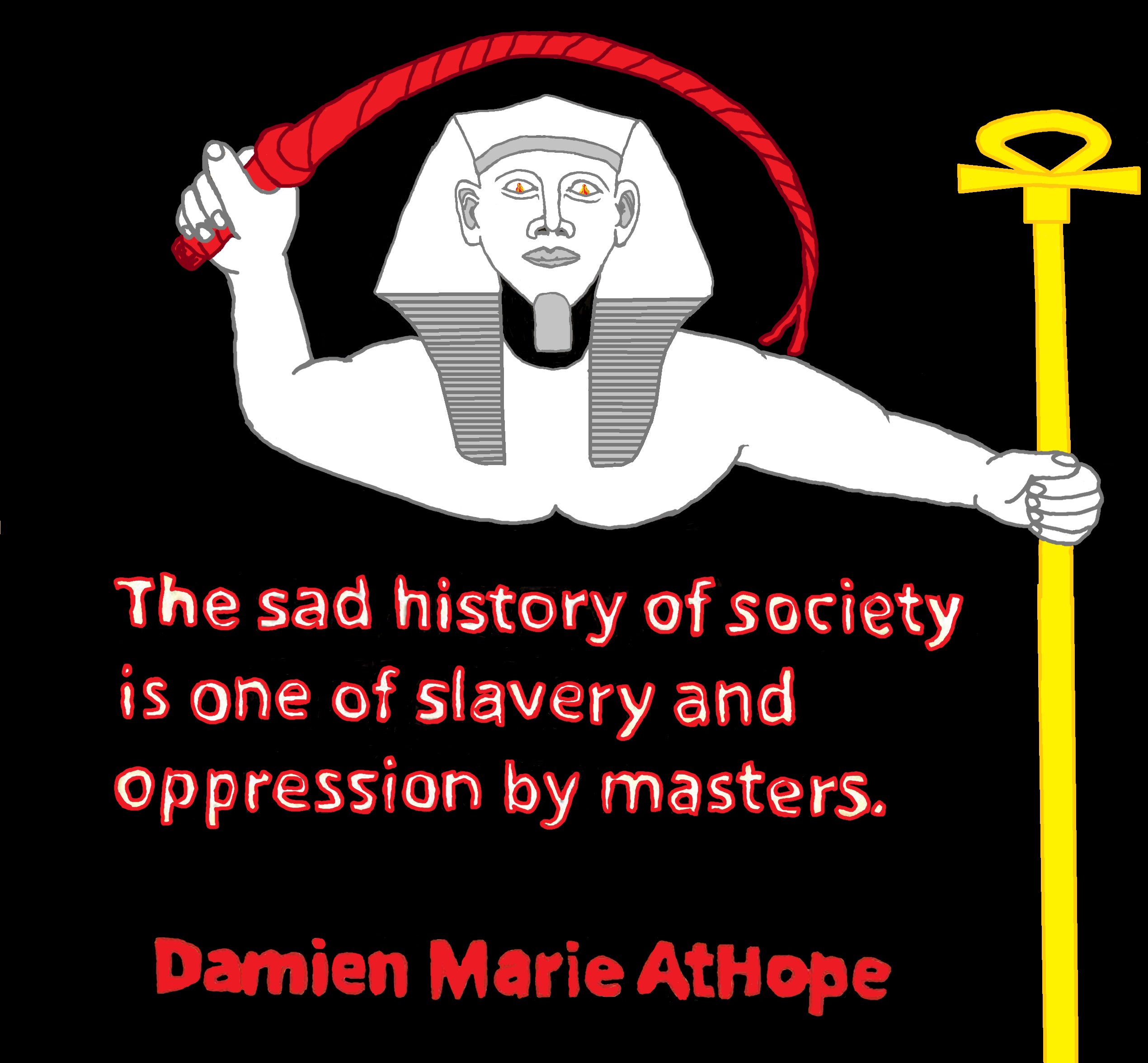
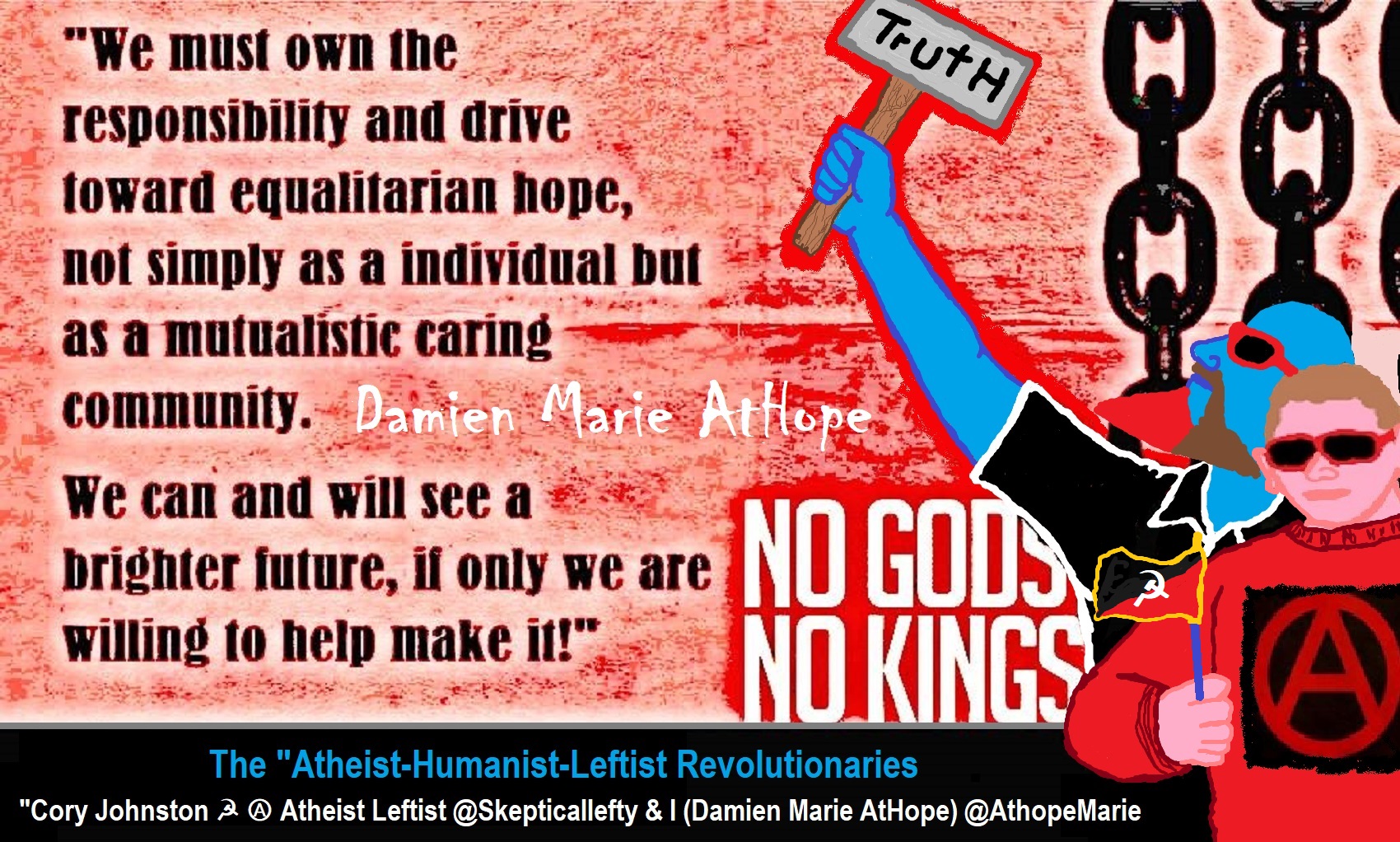
While hallucinogens are associated with shamanism, it is alcohol that is associated with paganism.
The Atheist-Humanist-Leftist Revolutionaries Shows in the prehistory series:
Show two: Pre-animism 300,000 years old and animism 100,000 years old: related to “Anarchism and Socialism”
Show tree: Totemism 50,000 years old: related to “Anarchism and Socialism”
Show four: Shamanism 30,000 years old: related to “Anarchism and Socialism”
Show five: Paganism 12,000 years old: related to “Anarchism and Socialism”
Show six: Emergence of hierarchy, sexism, slavery, and the new male god dominance: Paganism 7,000-5,000 years old: related to “Anarchism and Socialism” (Capitalism) (World War 0) Elite and their slaves!
Prehistory: related to “Anarchism and Socialism” the division of labor, power, rights, and recourses: VIDEO
Pre-animism 300,000 years old and animism 100,000 years old: related to “Anarchism and Socialism”: VIDEO
Totemism 50,000 years old: related to “Anarchism and Socialism”: VIDEO
Shamanism 30,000 years old: related to “Anarchism and Socialism”: VIDEO
Paganism 12,000 years old: related to “Anarchism and Socialism” (Pre-Capitalism): VIDEO
Paganism 7,000-5,000 years old: related to “Anarchism and Socialism” (Capitalism) (World War 0) Elite and their slaves: VIEDO
Paganism 5,000 years old: progressed organized religion and the state: related to “Anarchism and Socialism” (Kings and the Rise of the State): VIEDO
Paganism 4,000 years old: related to “Anarchism and Socialism” (First Moralistic gods, then the Origin time of Monotheism): VIEDO
I do not hate simply because I challenge and expose myths or lies any more than others being thought of as loving simply because of the protection and hiding from challenge their favored myths or lies.
The truth is best championed in the sunlight of challenge.
An archaeologist once said to me “Damien religion and culture are very different”
My response, So are you saying that was always that way, such as would you say Native Americans’ cultures are separate from their religions? And do you think it always was the way you believe?
I had said that religion was a cultural product. That is still how I see it and there are other archaeologists that think close to me as well. Gods too are the myths of cultures that did not understand science or the world around them, seeing magic/supernatural everywhere.
I personally think there is a goddess and not enough evidence to support a male god at Çatalhöyük but if there was both a male and female god and goddess then I know the kind of gods they were like Proto-Indo-European mythology.
This series idea was addressed in, Anarchist Teaching as Free Public Education or Free Education in the Public: VIDEO
Our 12 video series: Organized Oppression: Mesopotamian State Force and the Politics of power (9,000-4,000 years ago), is adapted from: The Complete and Concise History of the Sumerians and Early Bronze Age Mesopotamia (7000-2000 BC): https://www.youtube.com/watch?v=szFjxmY7jQA by “History with Cy“
Show #1: Mesopotamian State Force and the Politics of Power (Samarra, Halaf, Ubaid)
Show #2: Mesopotamian State Force and the Politics of Power
Show #3: Mesopotamian State Force and the Politics of Power (Uruk and the First Cities)
Show #4: Mesopotamian State Force and the Politics of Power (First Kings)
Show #5: Mesopotamian State Force and the Politics of Power (Early Dynastic Period)
Show #6: Mesopotamian State Force and the Politics of Power
Show #7: Mesopotamian State Force and the Politics of Power (Sargon and Akkadian Rule)
Show #9: Mesopotamian State Force and the Politics of Power (Gudea of Lagash and Utu-hegal)
Show #12: Mesopotamian State Force and the Politics of Power (Aftermath and Legacy of Sumer)

The “Atheist-Humanist-Leftist Revolutionaries”
Cory Johnston ☭ Ⓐ Atheist Leftist @Skepticallefty & I (Damien Marie AtHope) @AthopeMarie (my YouTube & related blog) are working jointly in atheist, antitheist, antireligionist, antifascist, anarchist, socialist, and humanist endeavors in our videos together, generally, every other Saturday.
Why Does Power Bring Responsibility?
Think, how often is it the powerless that start wars, oppress others, or commit genocide? So, I guess the question is to us all, to ask, how can power not carry responsibility in a humanity concept? I know I see the deep ethical responsibility that if there is power their must be a humanistic responsibility of ethical and empathic stewardship of that power. Will I be brave enough to be kind? Will I possess enough courage to be compassionate? Will my valor reach its height of empathy? I as everyone, earns our justified respect by our actions, that are good, ethical, just, protecting, and kind. Do I have enough self-respect to put my love for humanity’s flushing, over being brought down by some of its bad actors? May we all be the ones doing good actions in the world, to help human flourishing.
I create the world I want to live in, striving for flourishing. Which is not a place but a positive potential involvement and promotion; a life of humanist goal precision. To master oneself, also means mastering positive prosocial behaviors needed for human flourishing. I may have lost a god myth as an atheist, but I am happy to tell you, my friend, it is exactly because of that, leaving the mental terrorizer, god belief, that I truly regained my connected ethical as well as kind humanity.
Cory and I will talk about prehistory and theism, addressing the relevance to atheism, anarchism, and socialism.
At the same time as the rise of the male god, 7,000 years ago, there was also the very time there was the rise of violence, war, and clans to kingdoms, then empires, then states. It is all connected back to 7,000 years ago, and it moved across the world.
Cory Johnston: https://damienmarieathope.com/2021/04/cory-johnston-mind-of-a-skeptical-leftist/?v=32aec8db952d
The Mind of a Skeptical Leftist (YouTube)
Cory Johnston: Mind of a Skeptical Leftist @Skepticallefty
The Mind of a Skeptical Leftist By Cory Johnston: “Promoting critical thinking, social justice, and left-wing politics by covering current events and talking to a variety of people. Cory Johnston has been thoughtfully talking to people and attempting to promote critical thinking, social justice, and left-wing politics.” http://anchor.fm/skepticalleft
Cory needs our support. We rise by helping each other.
Cory Johnston ☭ Ⓐ @Skepticallefty Evidence-based atheist leftist (he/him) Producer, host, and co-host of 4 podcasts @skeptarchy @skpoliticspod and @AthopeMarie
Damien Marie AtHope (“At Hope”) Axiological Atheist, Anti-theist, Anti-religionist, Secular Humanist. Rationalist, Writer, Artist, Poet, Philosopher, Advocate, Activist, Psychology, and Armchair Archaeology/Anthropology/Historian.
Damien is interested in: Freedom, Liberty, Justice, Equality, Ethics, Humanism, Science, Atheism, Antiteism, Antireligionism, Ignosticism, Left-Libertarianism, Anarchism, Socialism, Mutualism, Axiology, Metaphysics, LGBTQI, Philosophy, Advocacy, Activism, Mental Health, Psychology, Archaeology, Social Work, Sexual Rights, Marriage Rights, Woman’s Rights, Gender Rights, Child Rights, Secular Rights, Race Equality, Ageism/Disability Equality, Etc. And a far-leftist, “Anarcho-Humanist.”
I am not a good fit in the atheist movement that is mostly pro-capitalist, I am anti-capitalist. Mostly pro-skeptic, I am a rationalist not valuing skepticism. Mostly pro-agnostic, I am anti-agnostic. Mostly limited to anti-Abrahamic religions, I am an anti-religionist.
To me, the “male god” seems to have either emerged or become prominent around 7,000 years ago, whereas the now favored monotheism “male god” is more like 4,000 years ago or so. To me, the “female goddess” seems to have either emerged or become prominent around 11,000-10,000 years ago or so, losing the majority of its once prominence around 2,000 years ago due largely to the now favored monotheism “male god” that grow in prominence after 4,000 years ago or so.
My Thought on the Evolution of Gods?
Animal protector deities from old totems/spirit animal beliefs come first to me, 13,000/12,000 years ago, then women as deities 11,000/10,000 years ago, then male gods around 7,000/8,000 years ago. Moralistic gods around 5,000/4,000 years ago, and monotheistic gods around 4,000/3,000 years ago.
To me, animal gods were likely first related to totemism animals around 13,000 to 12,000 years ago or older. Female as goddesses was next to me, 11,000 to 10,000 years ago or so with the emergence of agriculture. Then male gods come about 8,000 to 7,000 years ago with clan wars. Many monotheism-themed religions started in henotheism, emerging out of polytheism/paganism.


Damien Marie AtHope (Said as “At” “Hope”)/(Autodidact Polymath but not good at math):
Axiological Atheist, Anti-theist, Anti-religionist, Secular Humanist, Rationalist, Writer, Artist, Jeweler, Poet, “autodidact” Philosopher, schooled in Psychology, and “autodidact” Armchair Archaeology/Anthropology/Pre-Historian (Knowledgeable in the range of: 1 million to 5,000/4,000 years ago). I am an anarchist socialist politically. Reasons for or Types of Atheism
My Website, My Blog, & Short-writing or Quotes, My YouTube, Twitter: @AthopeMarie, and My Email: damien.marie.athope@gmail.com


